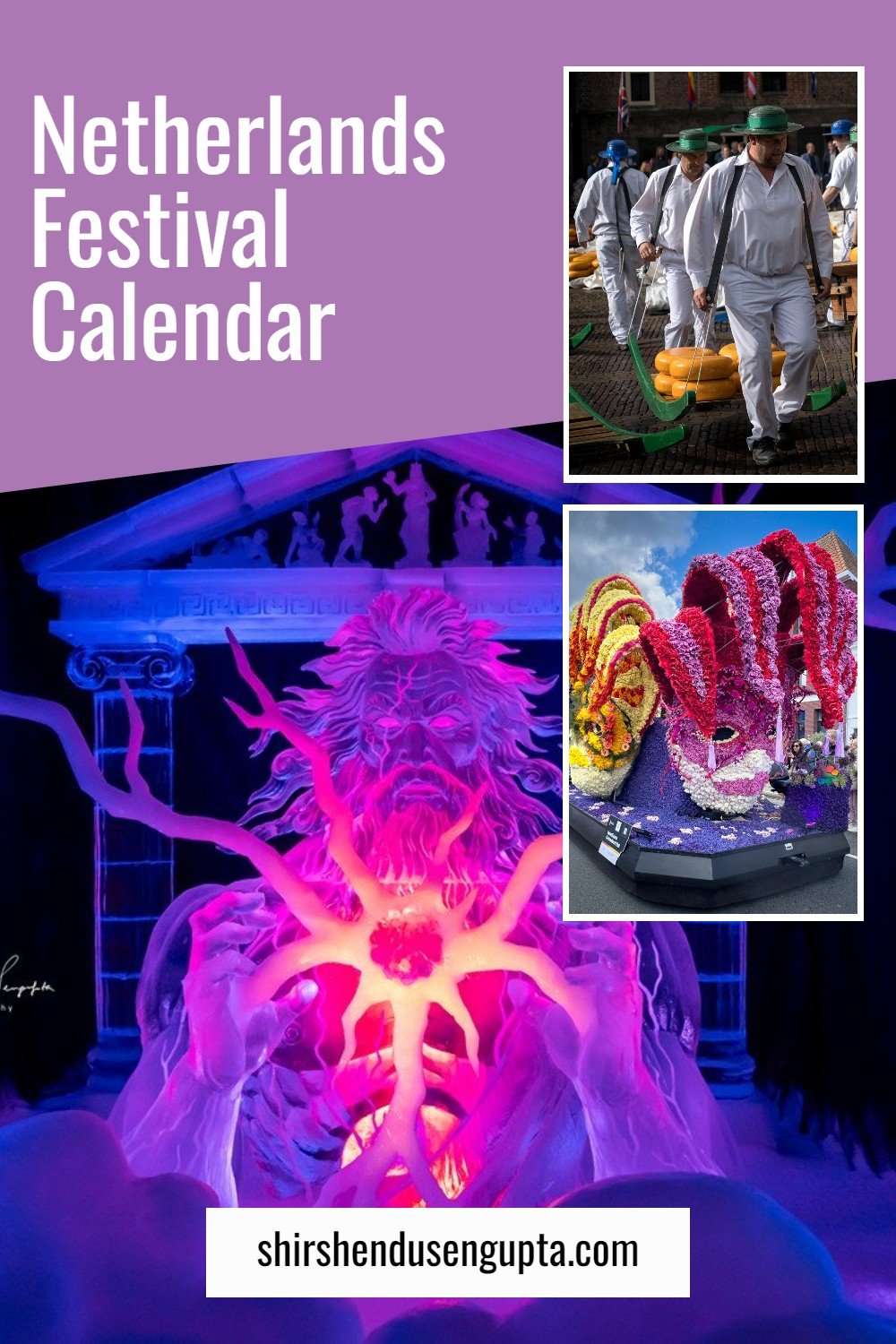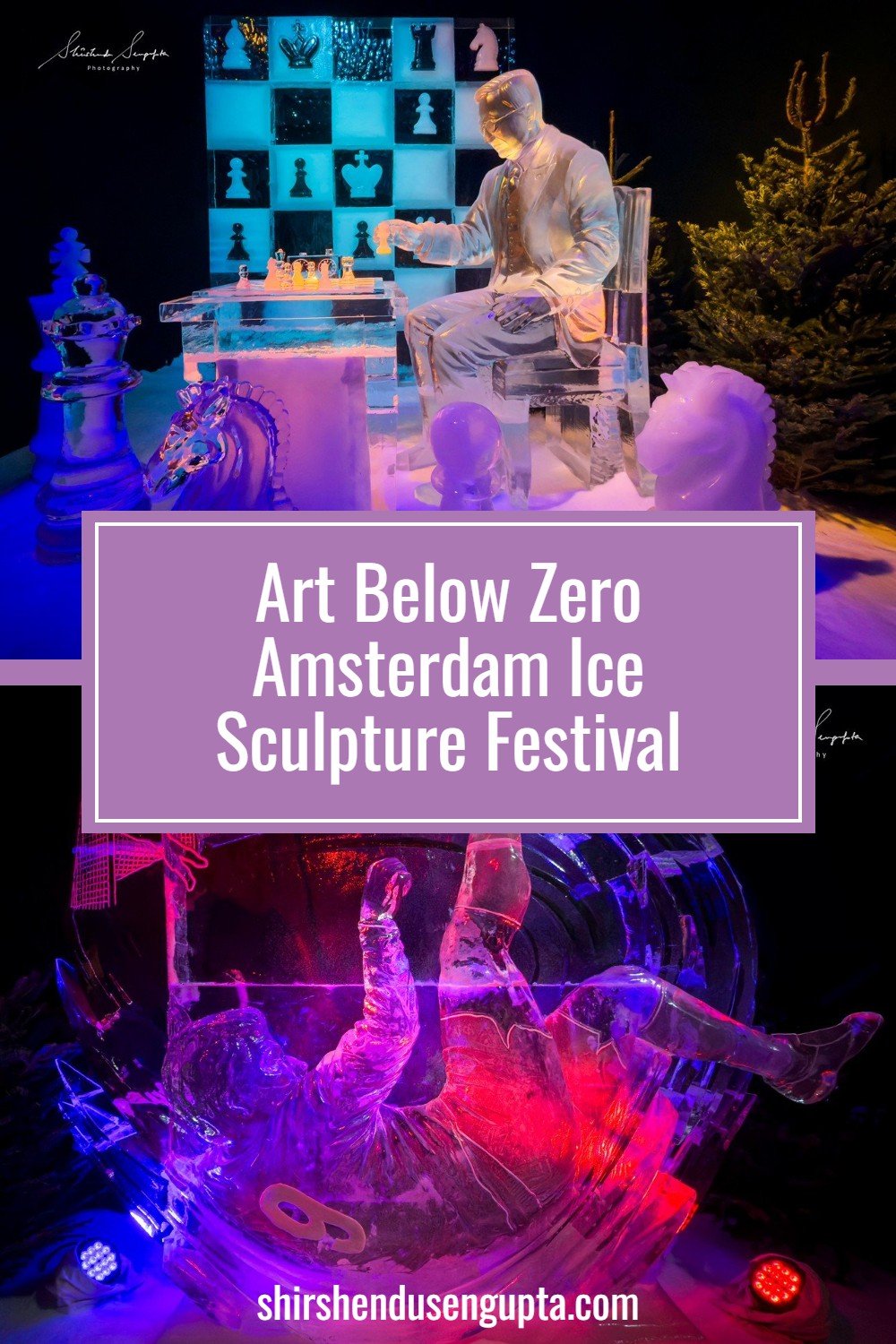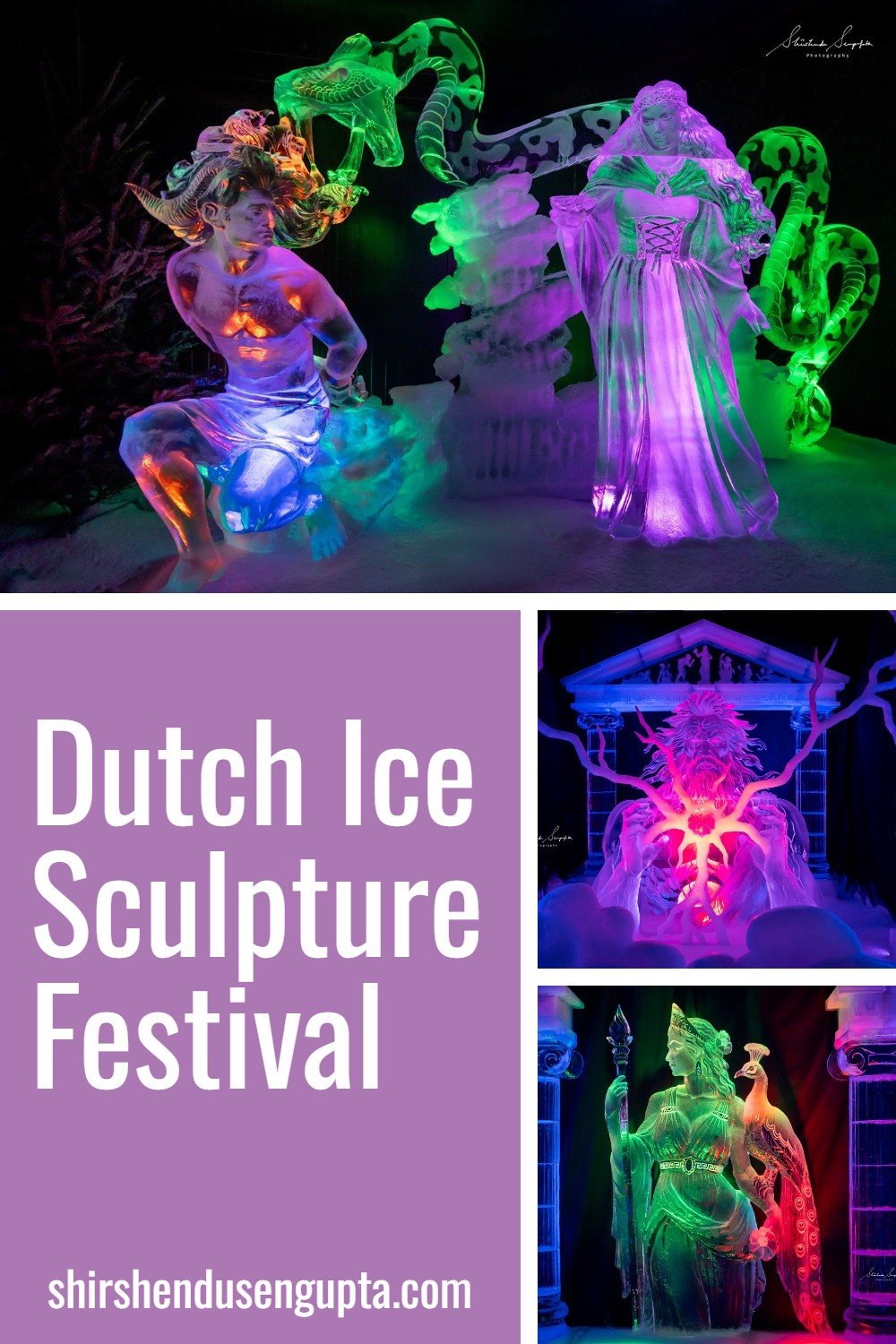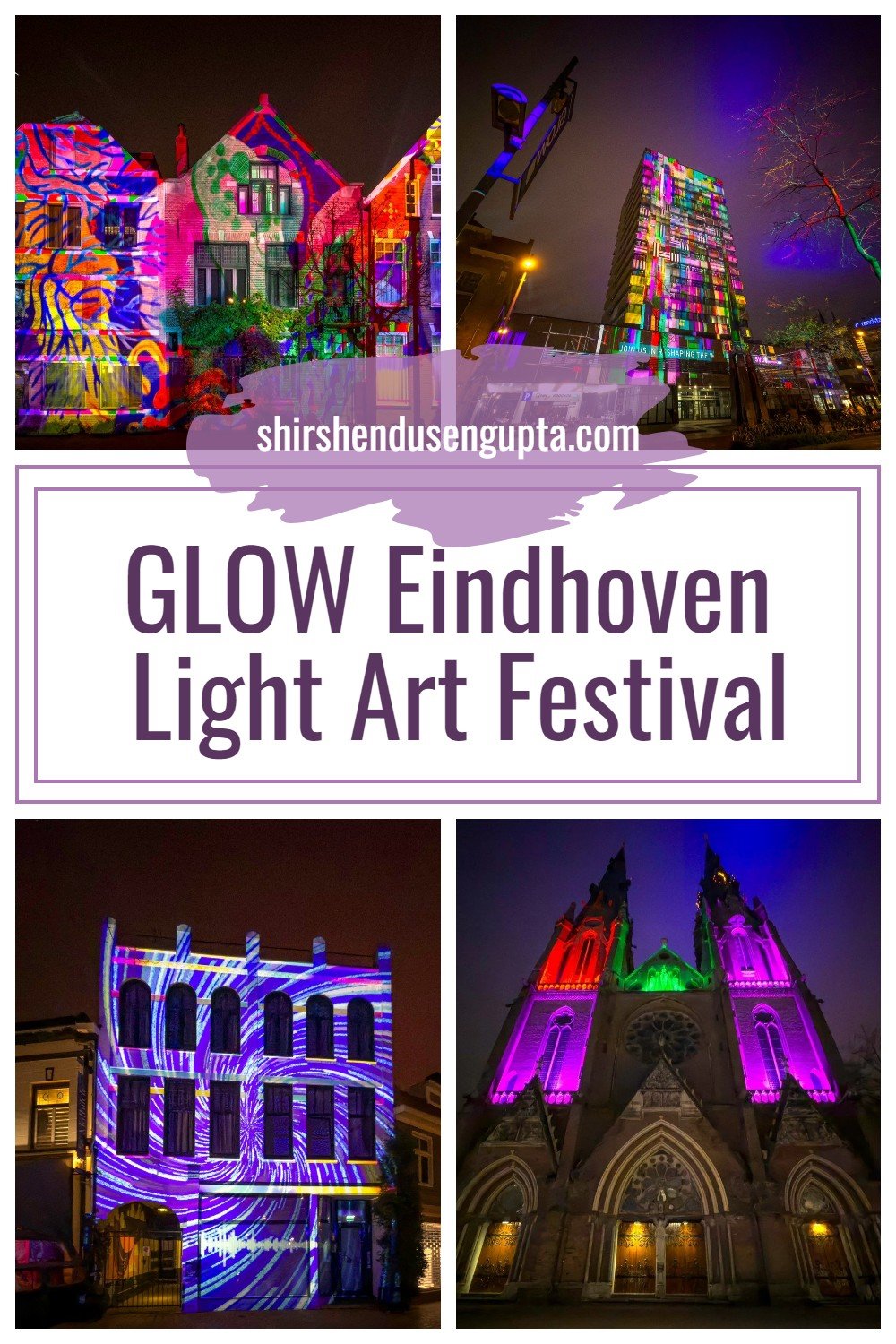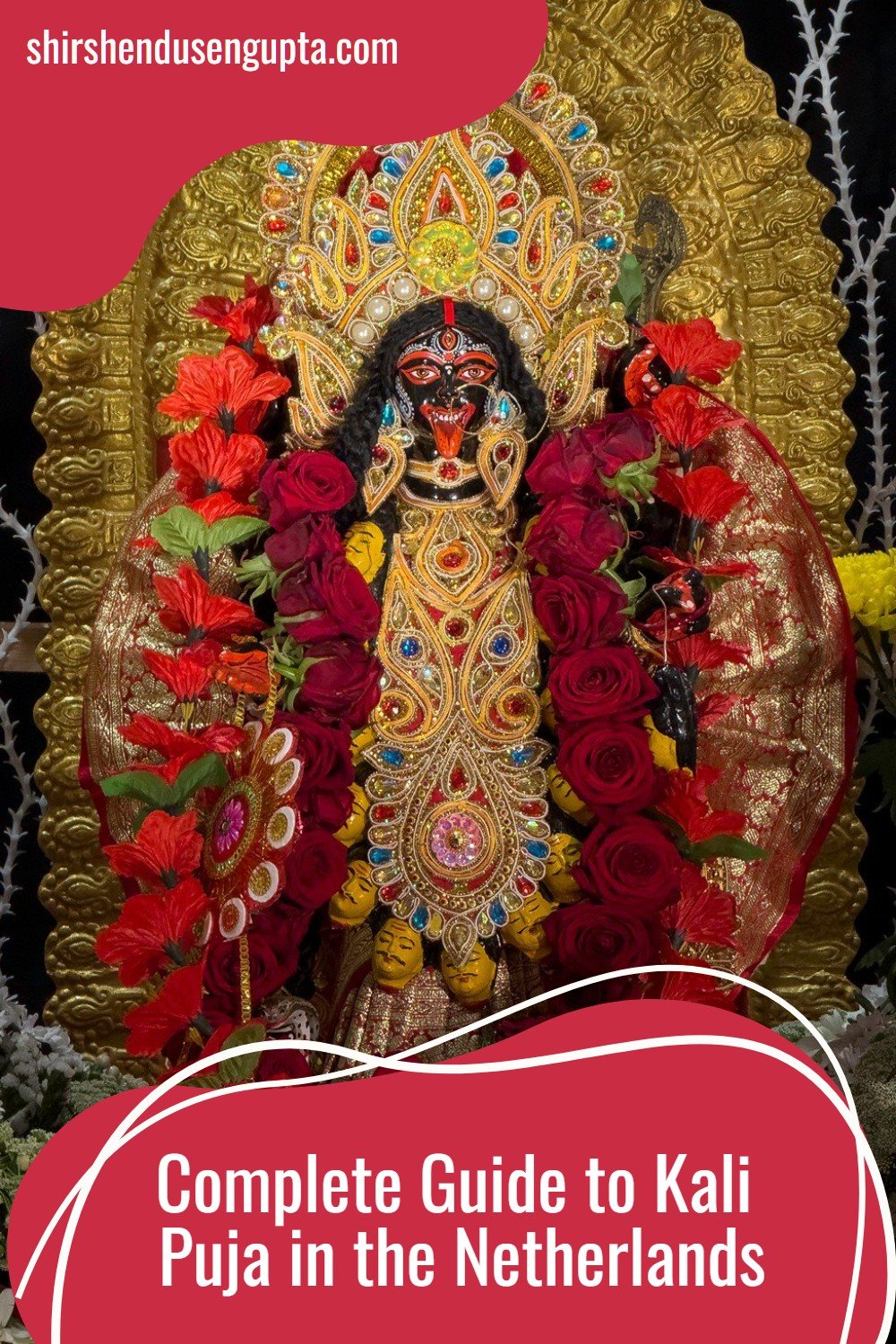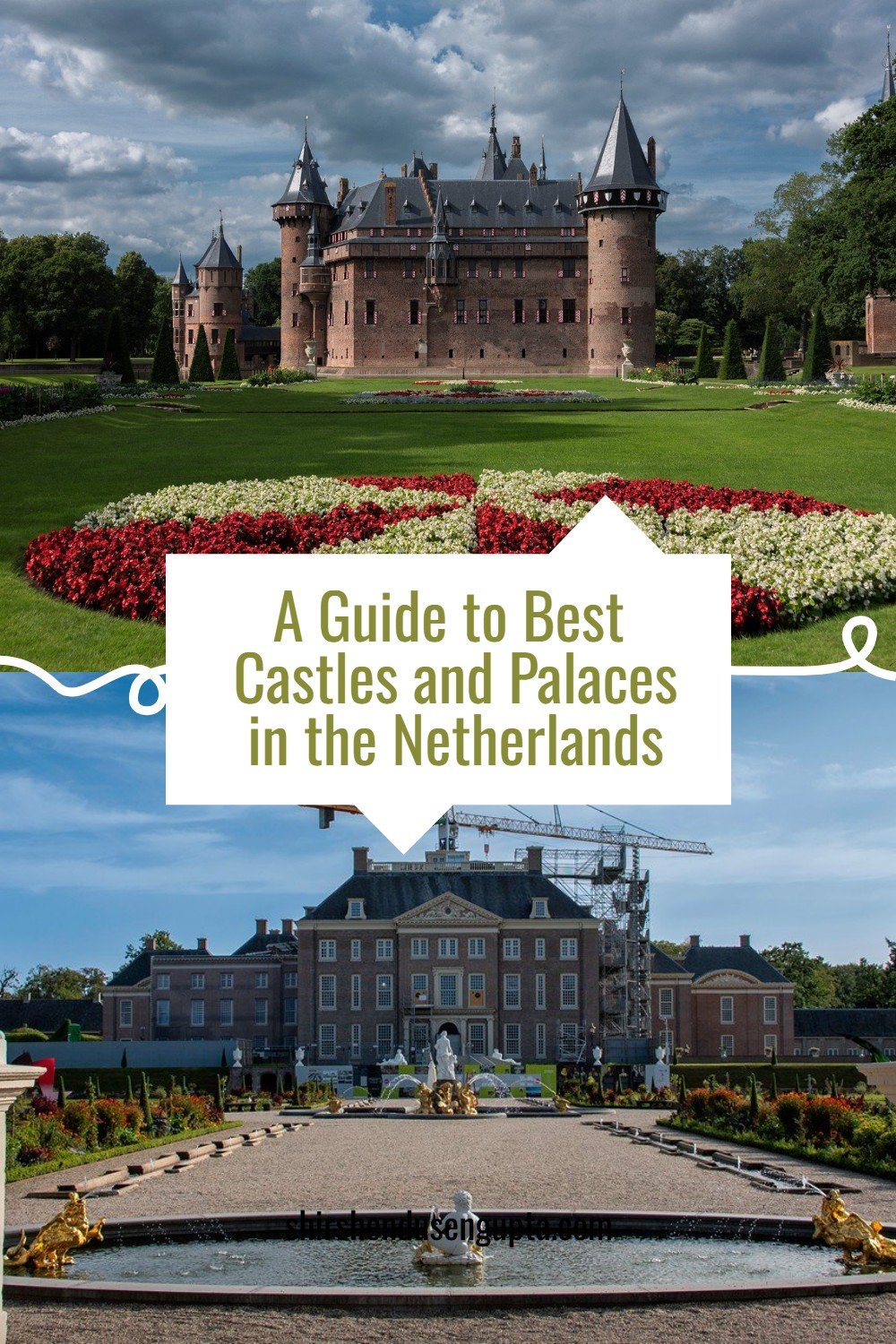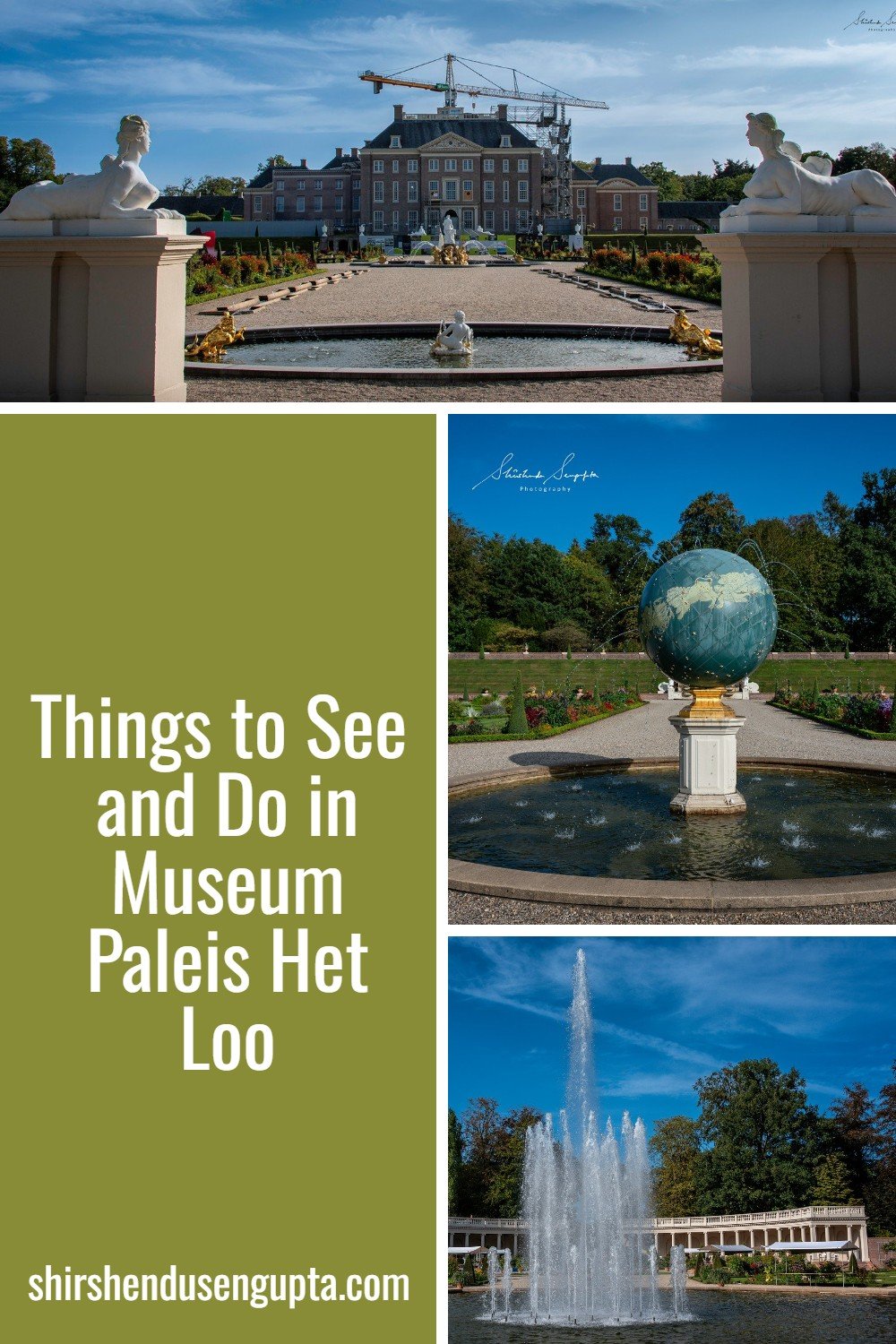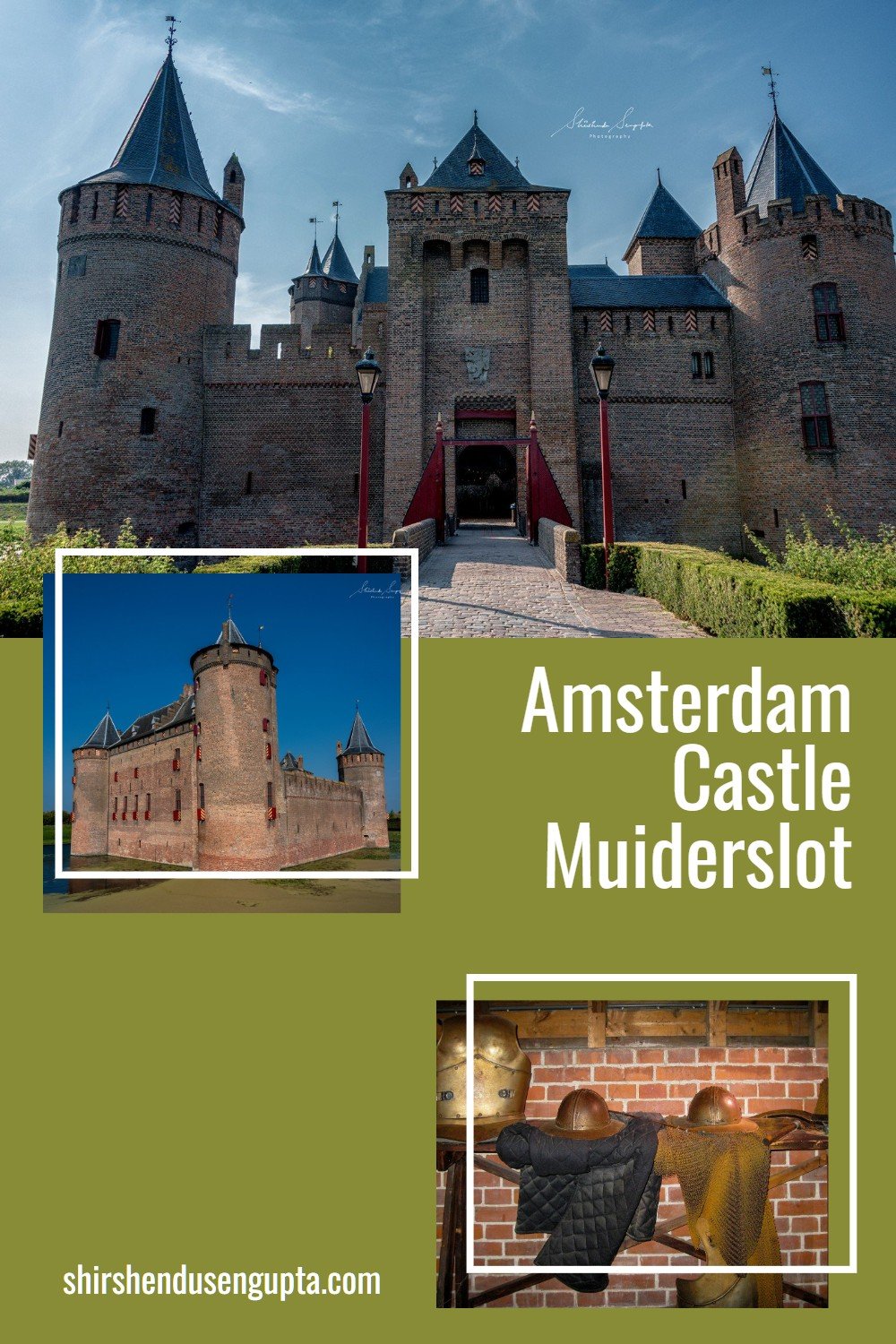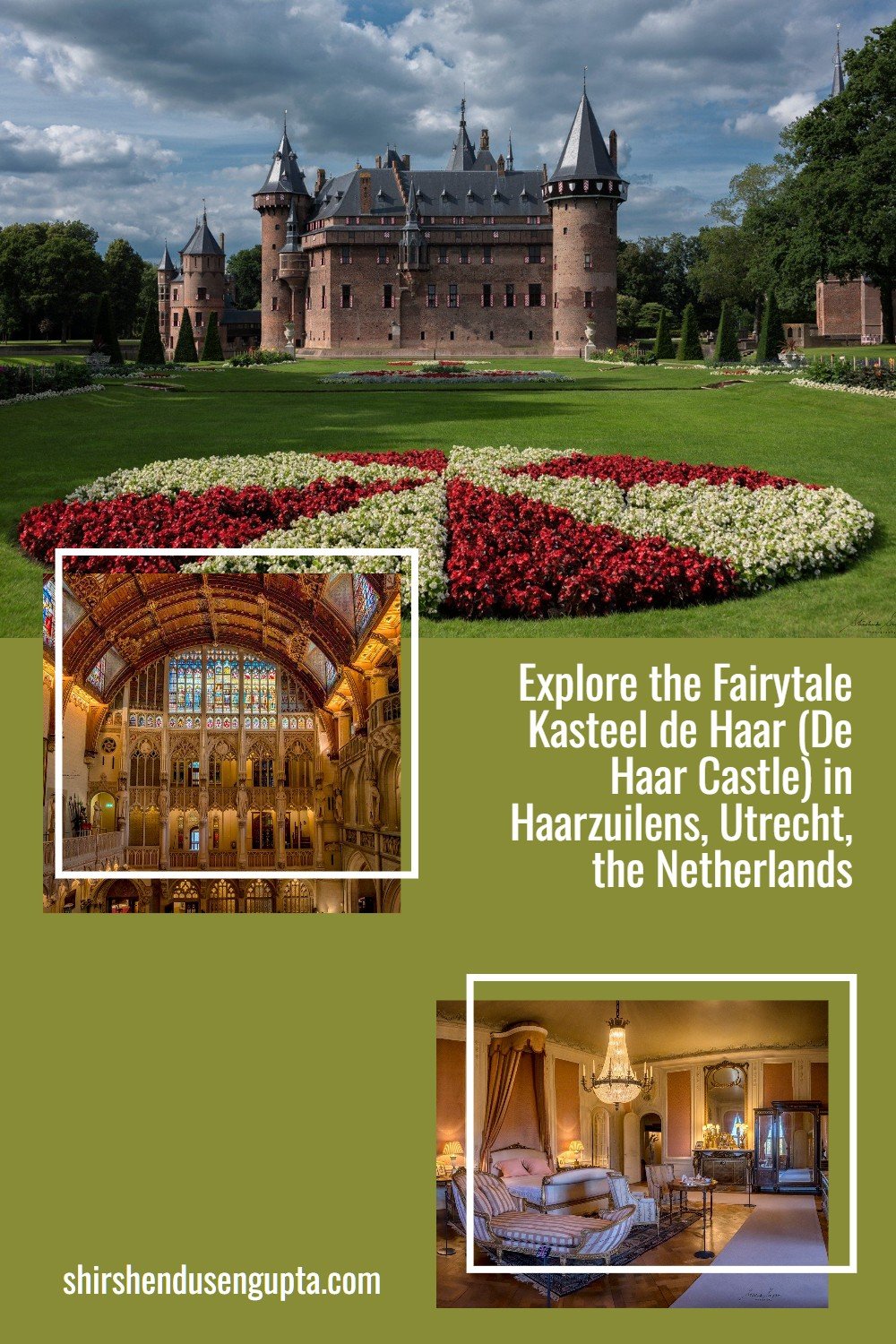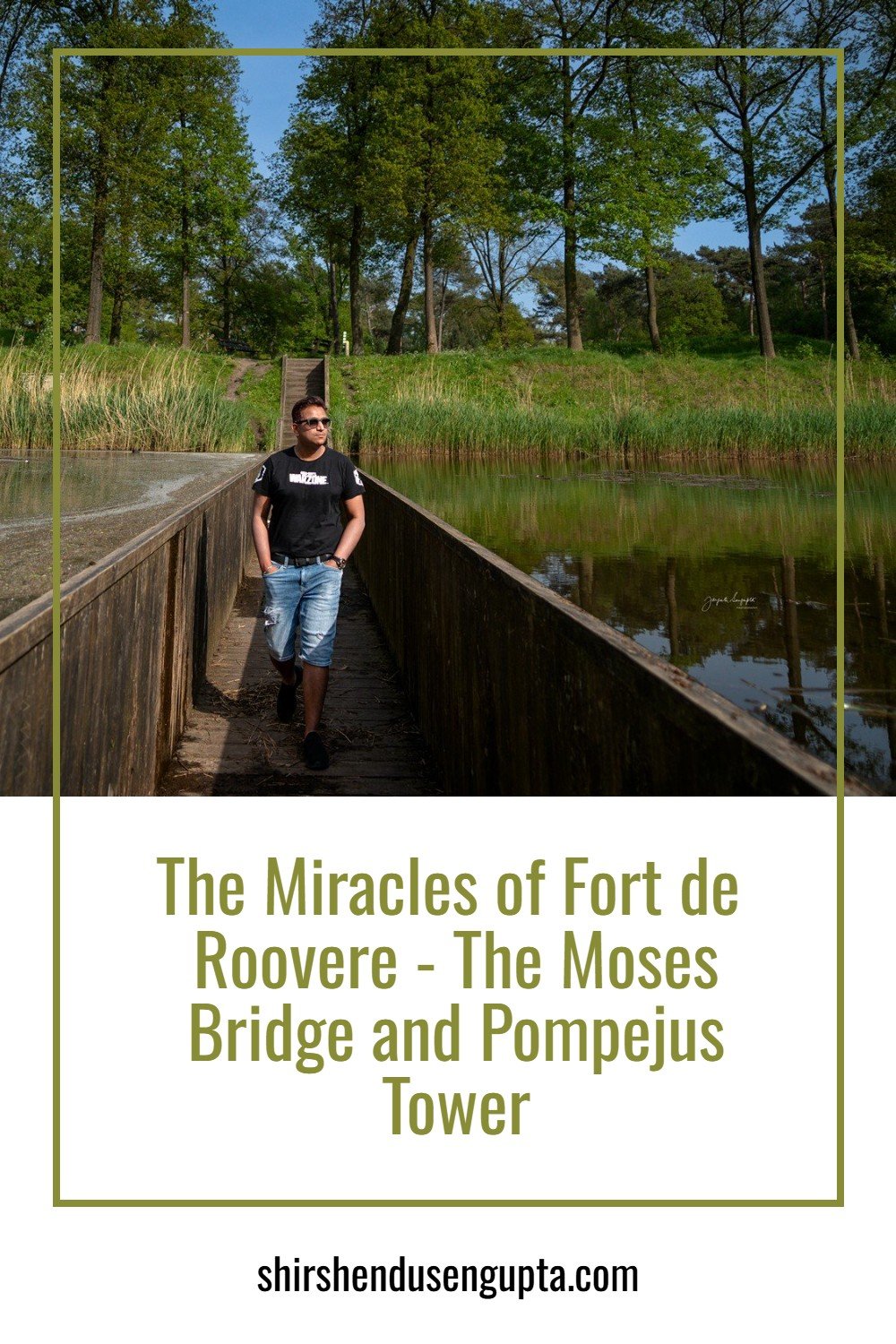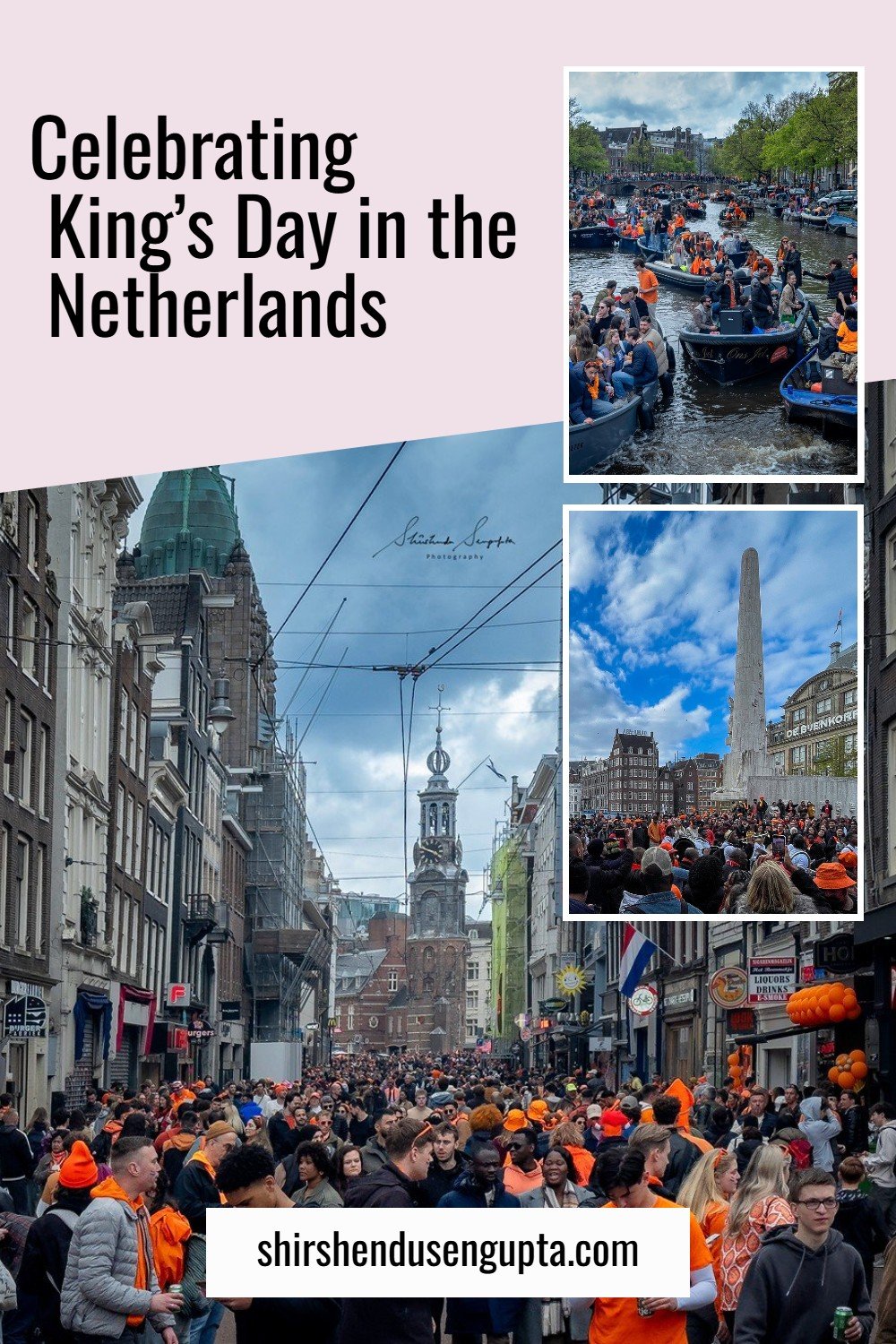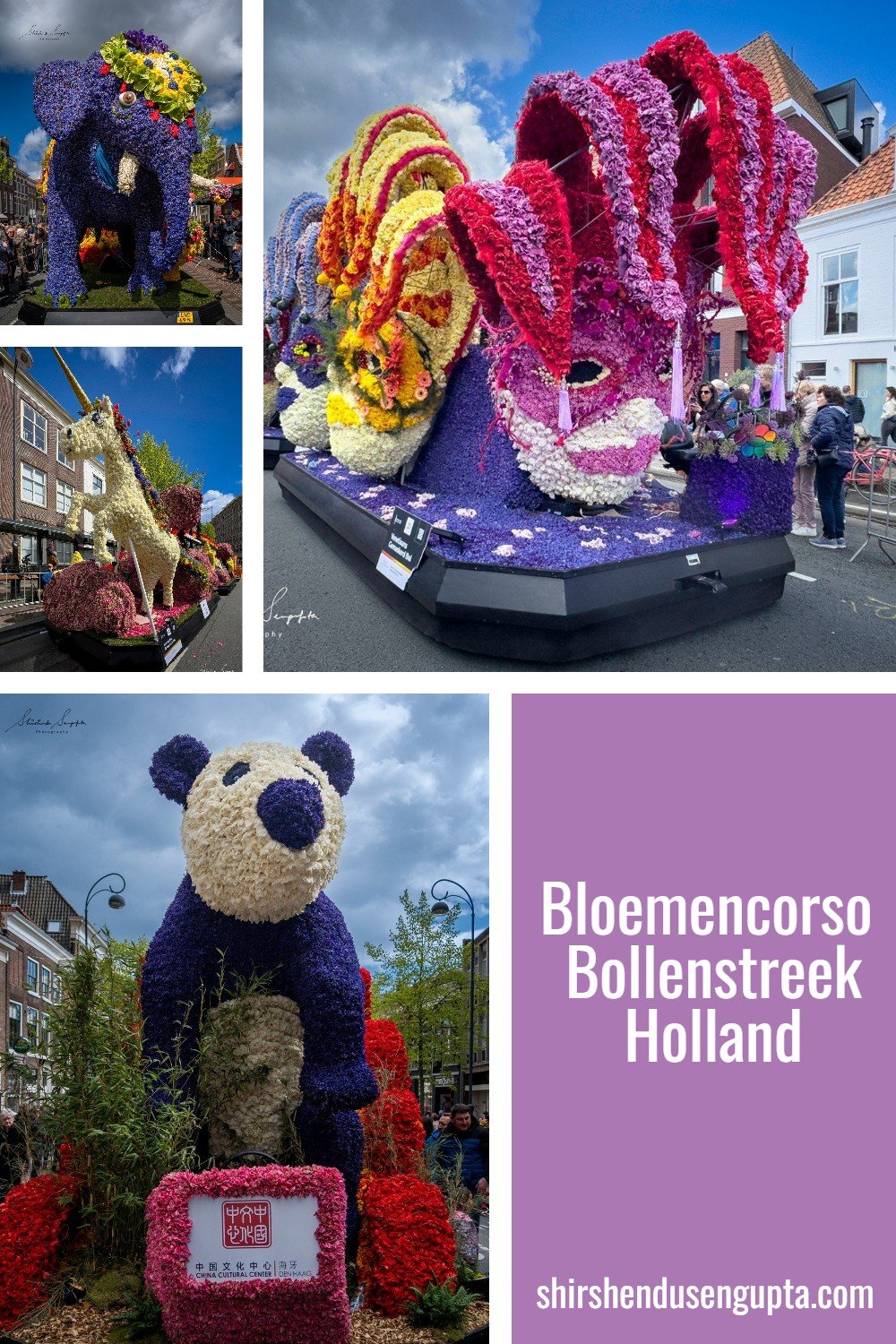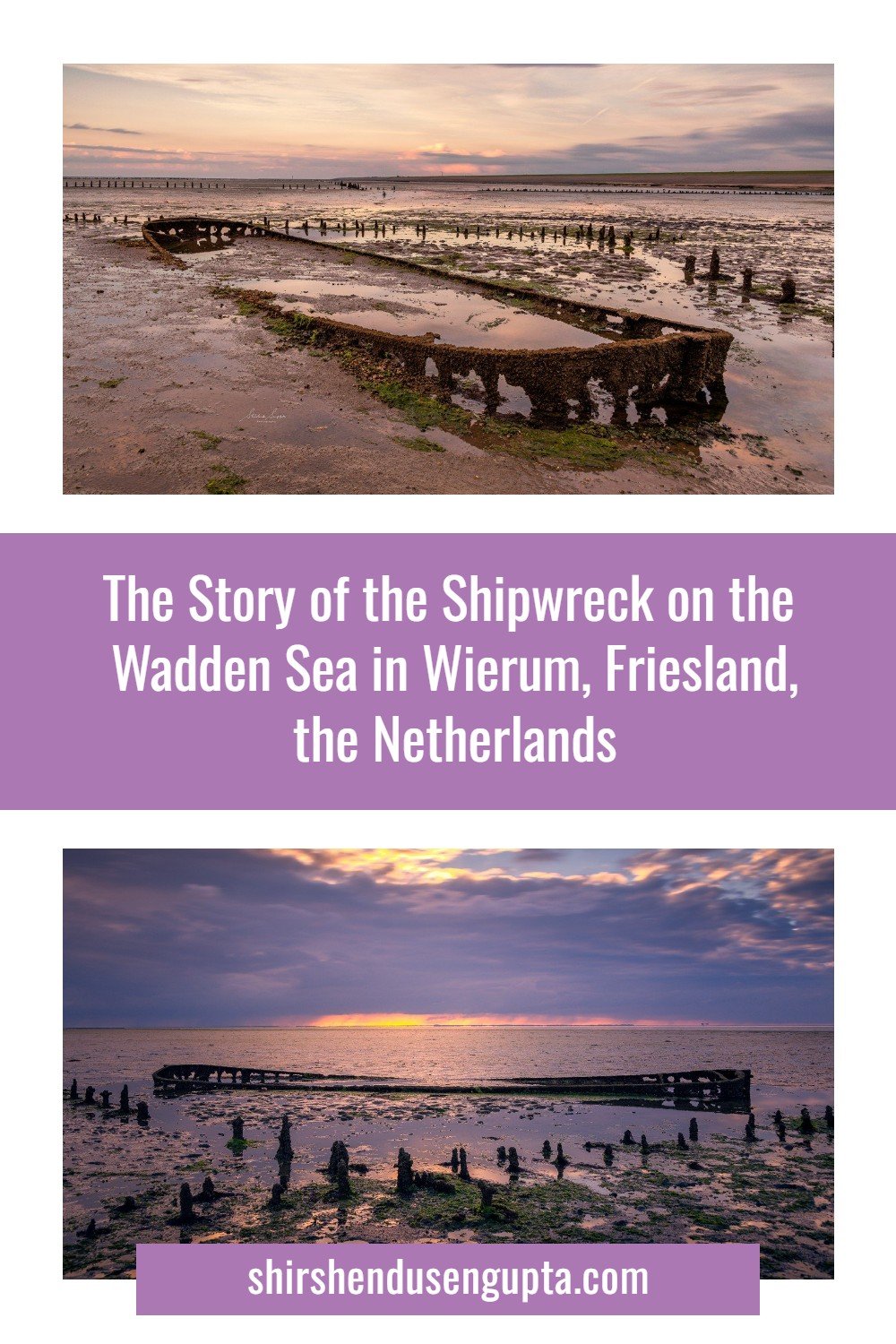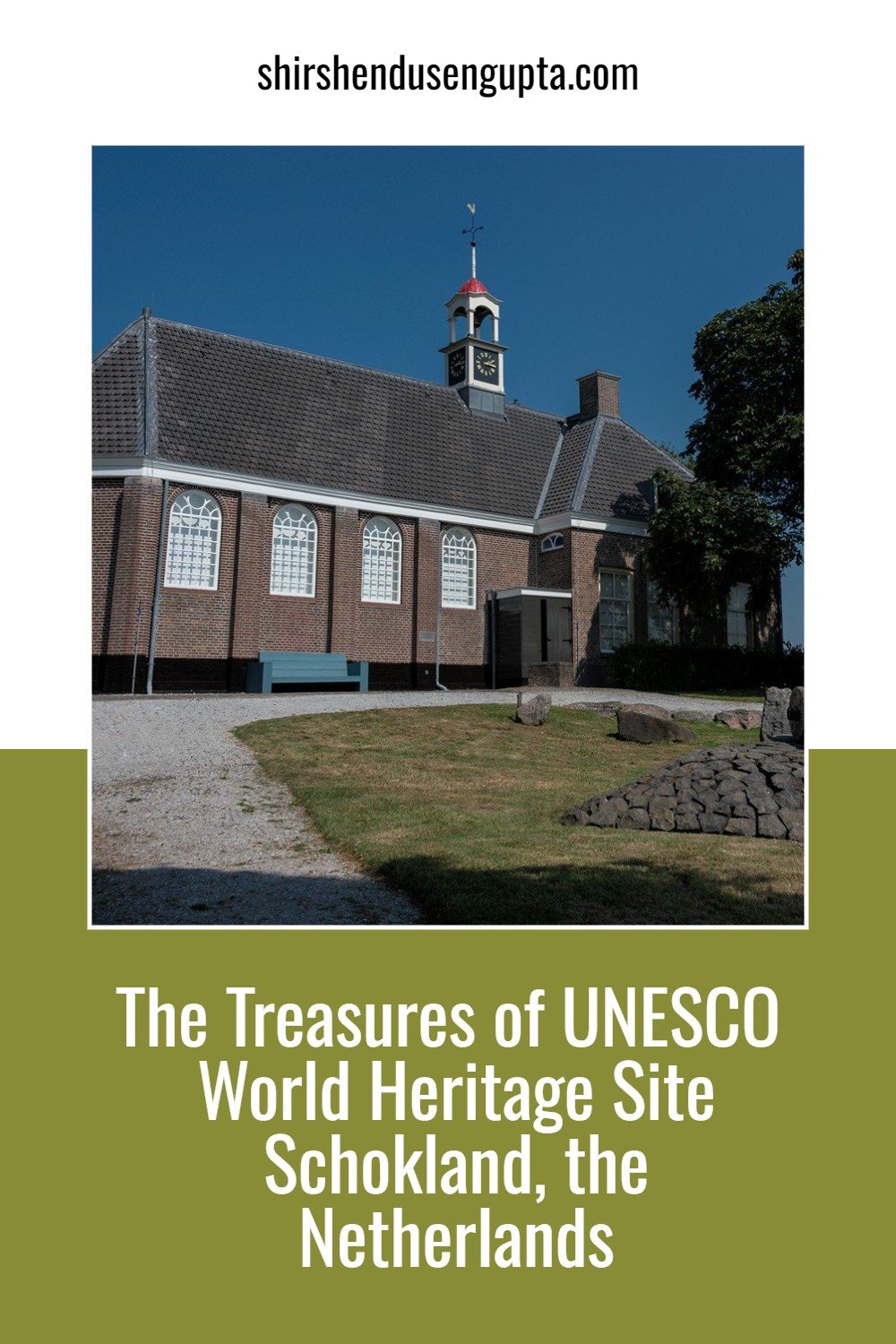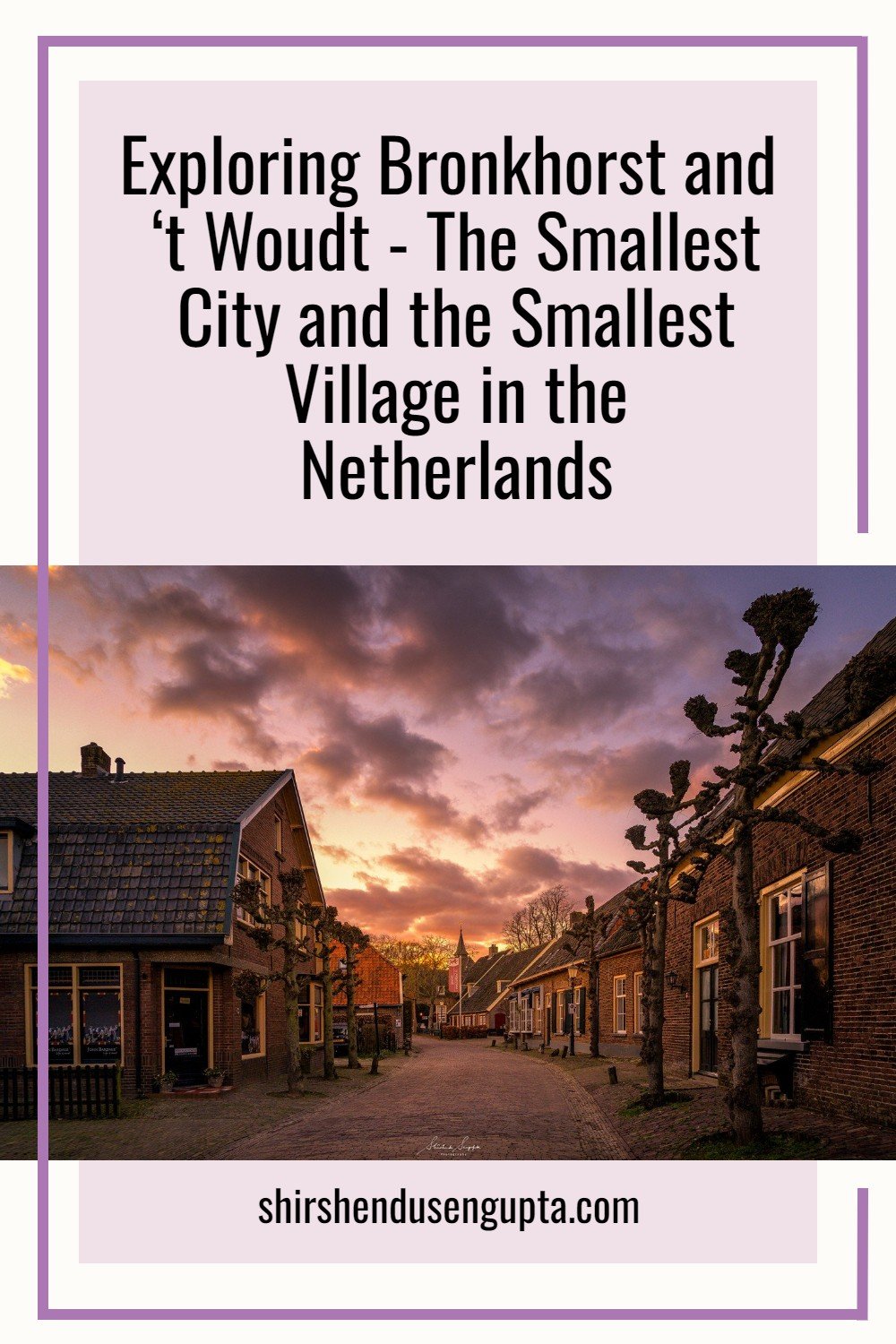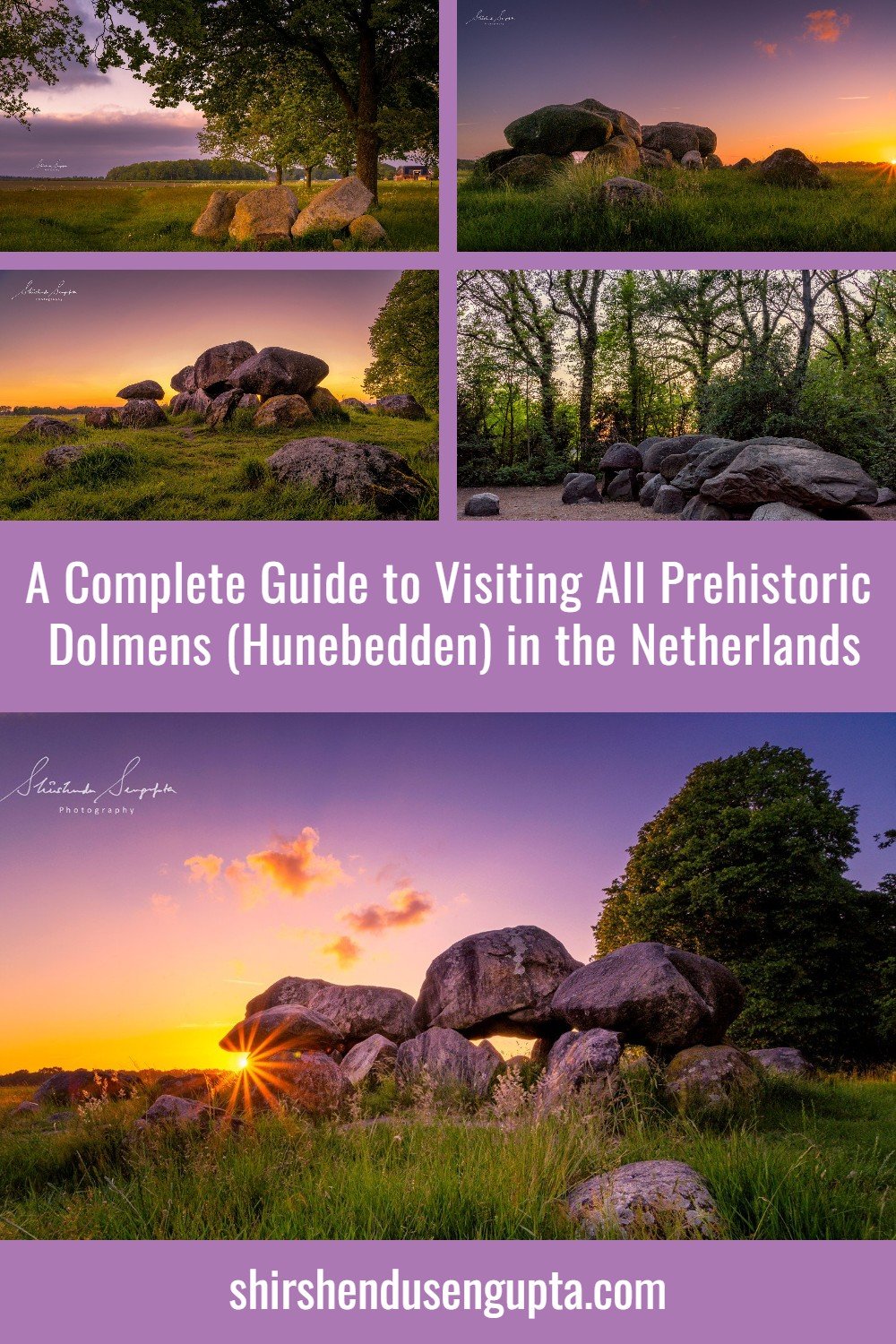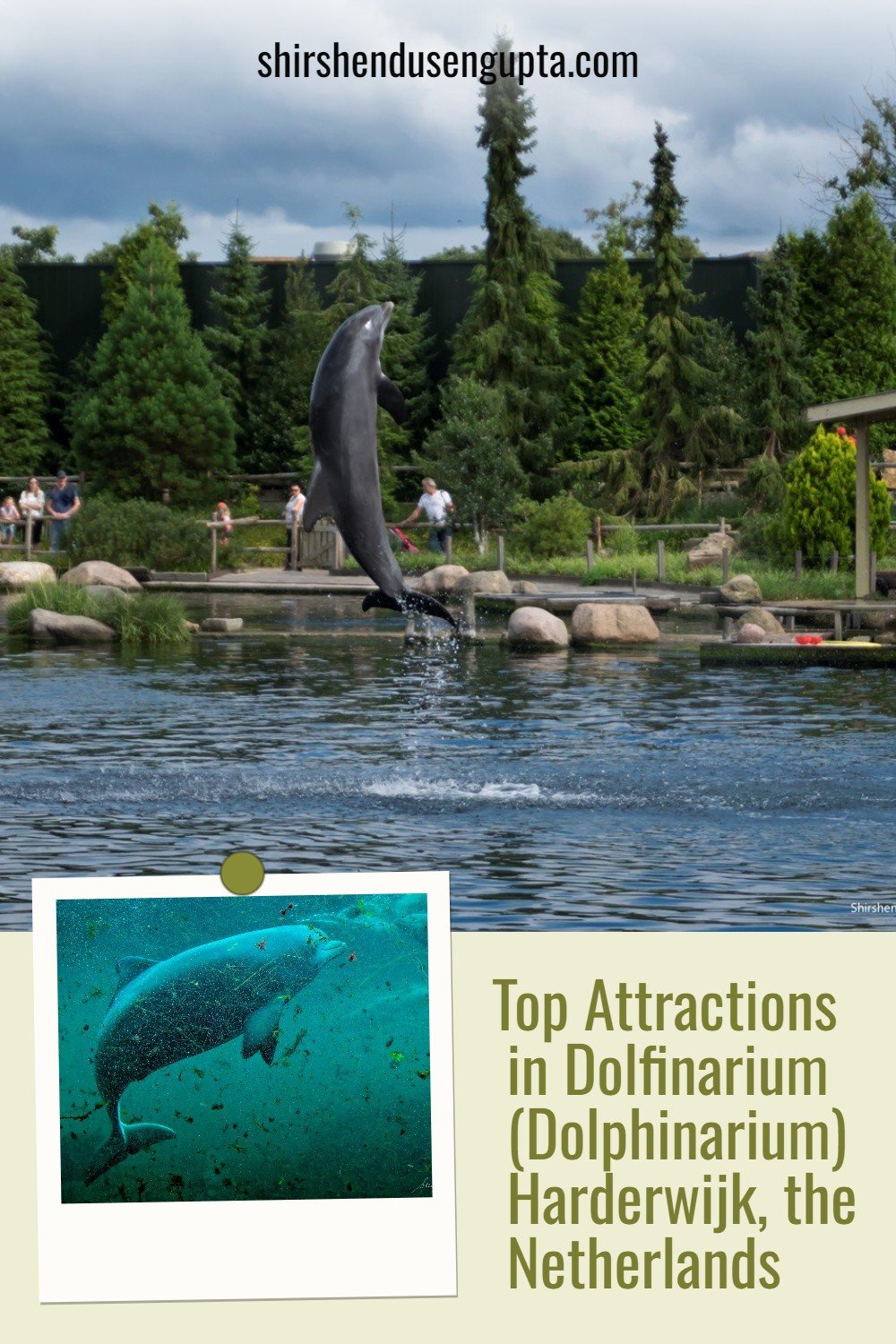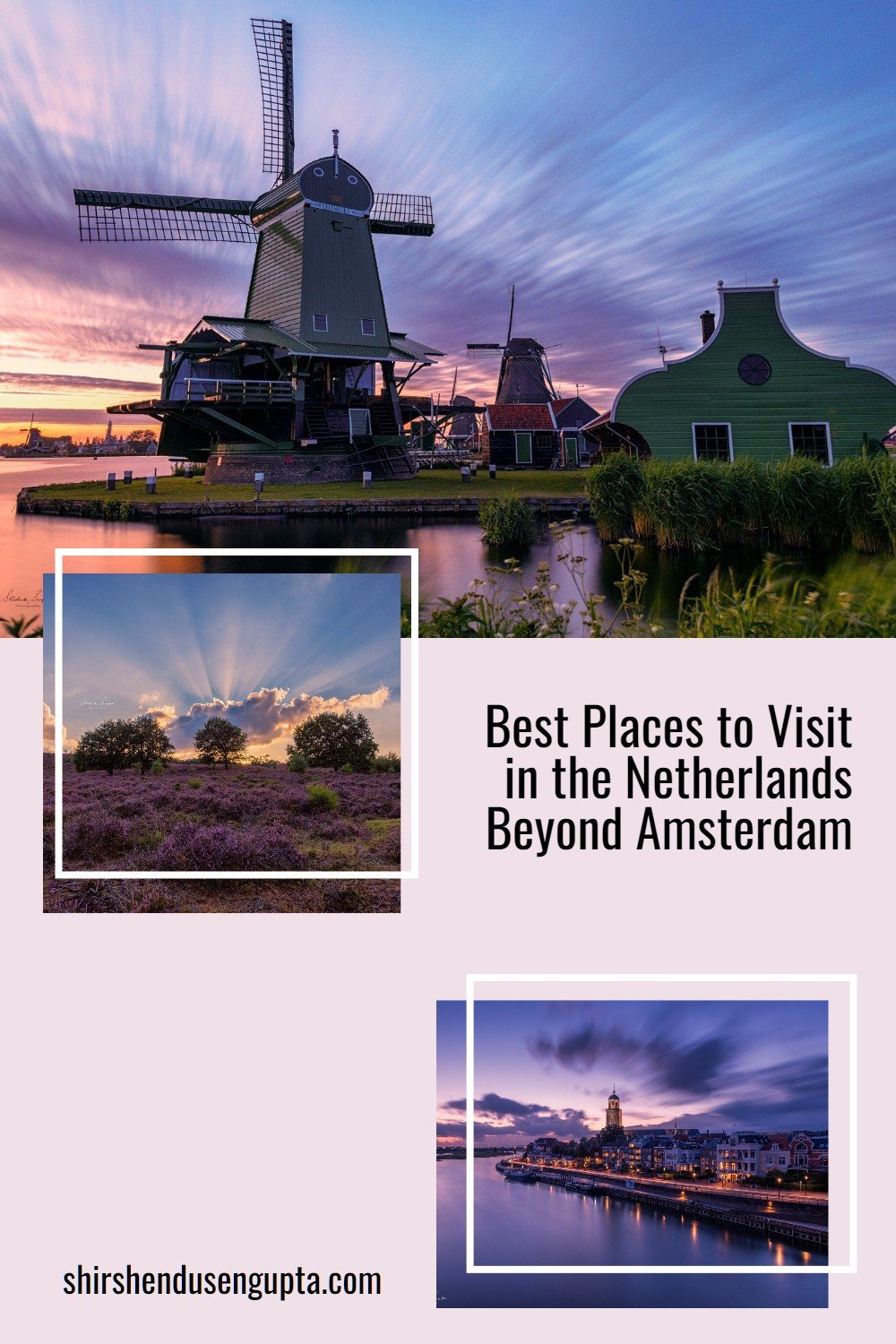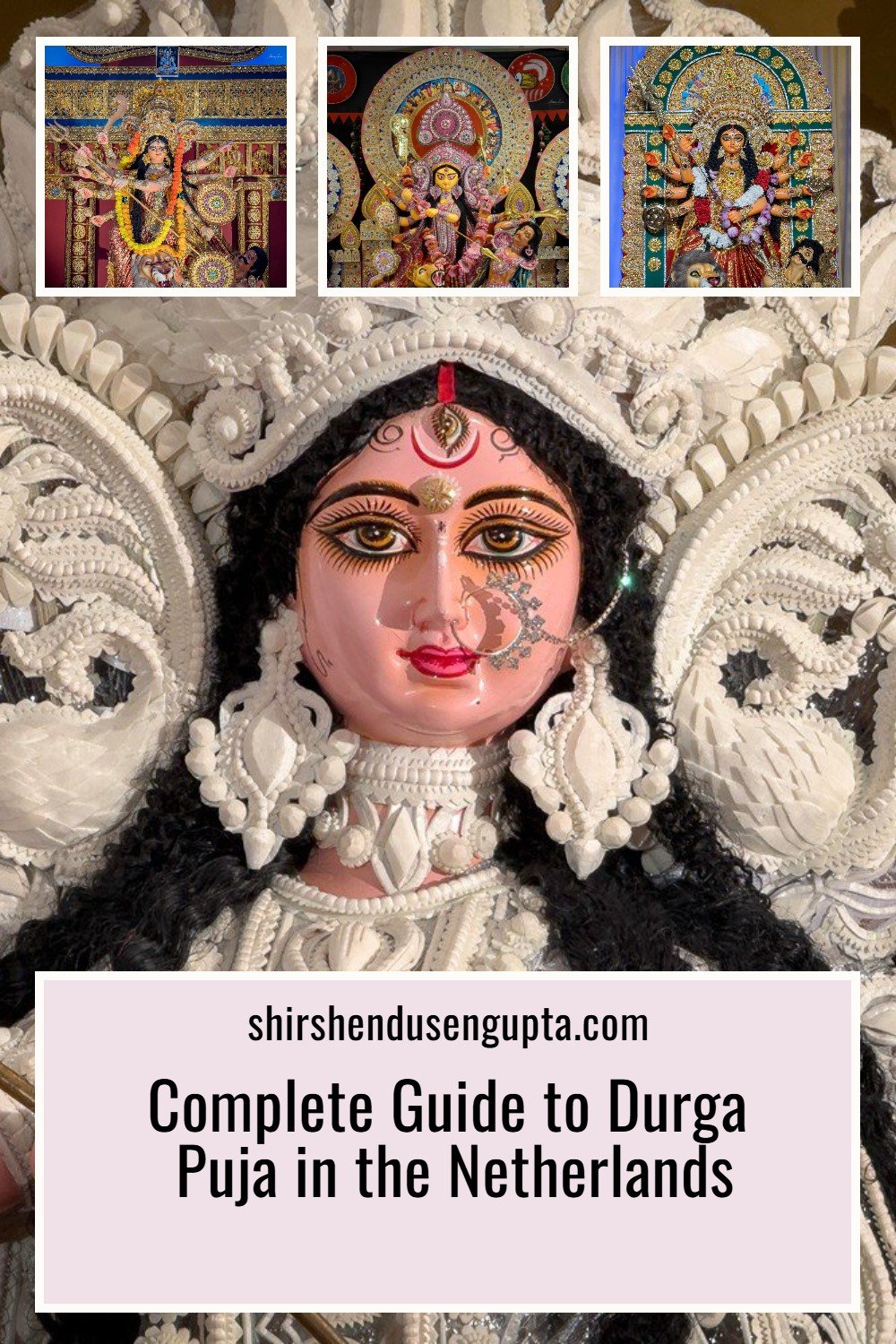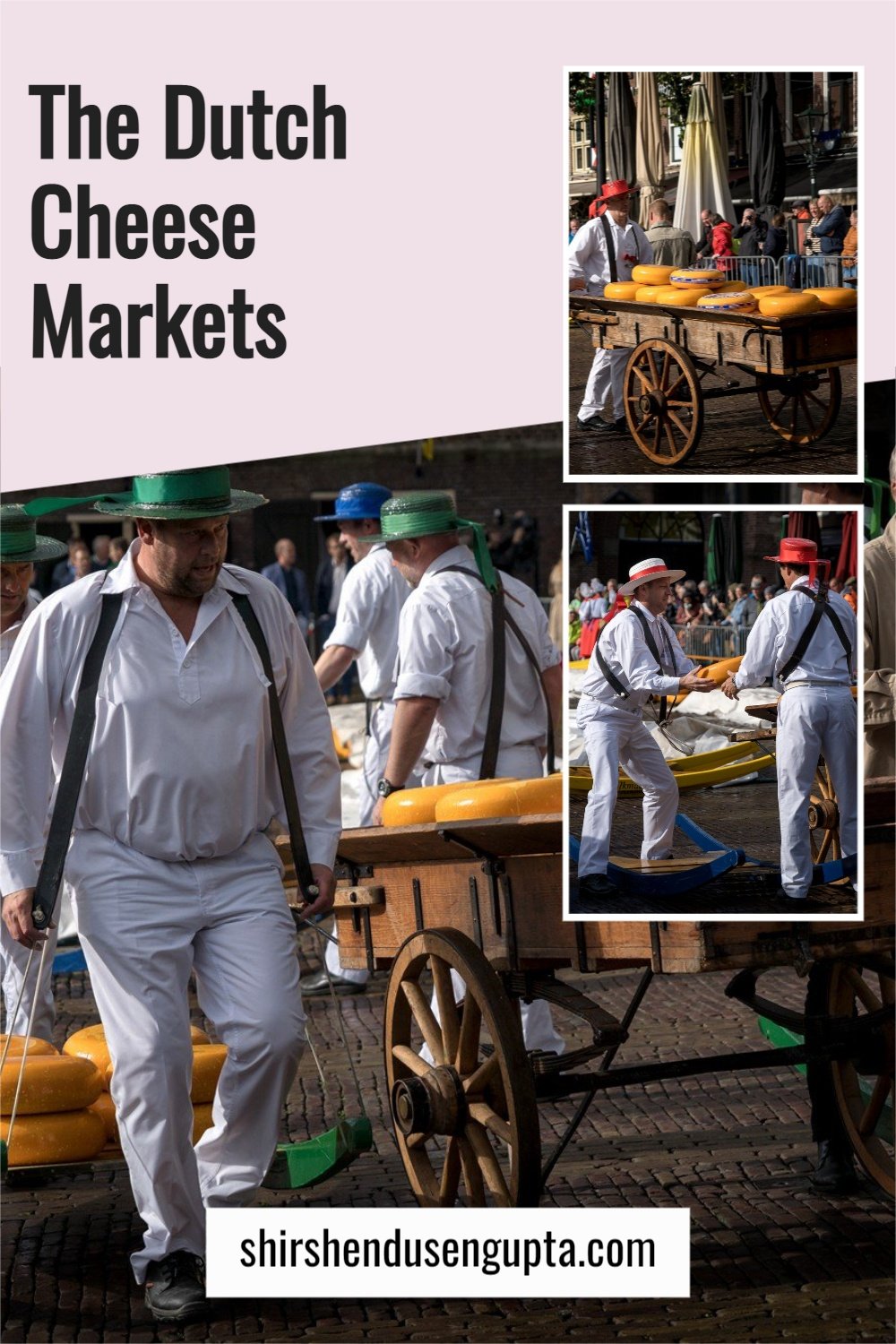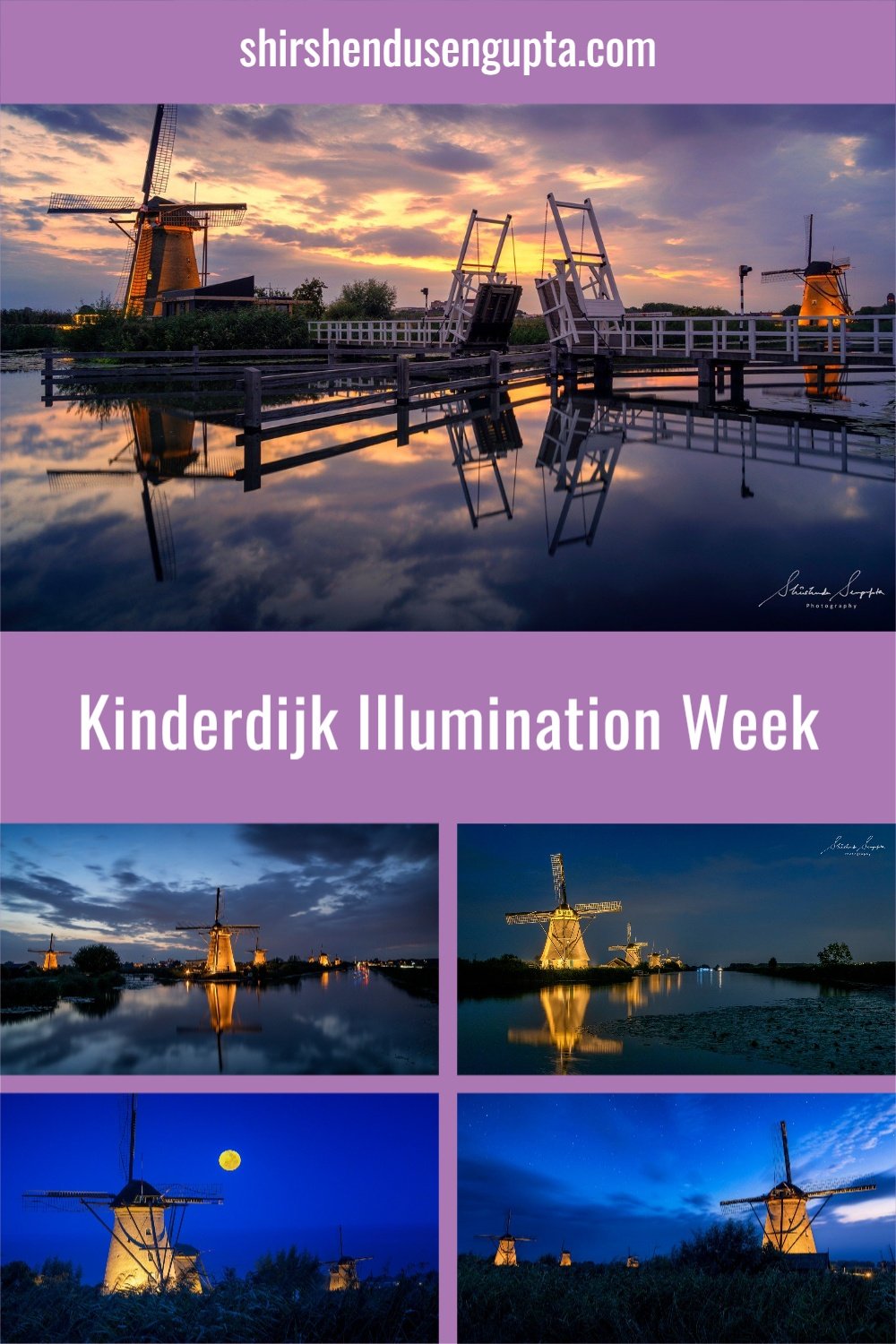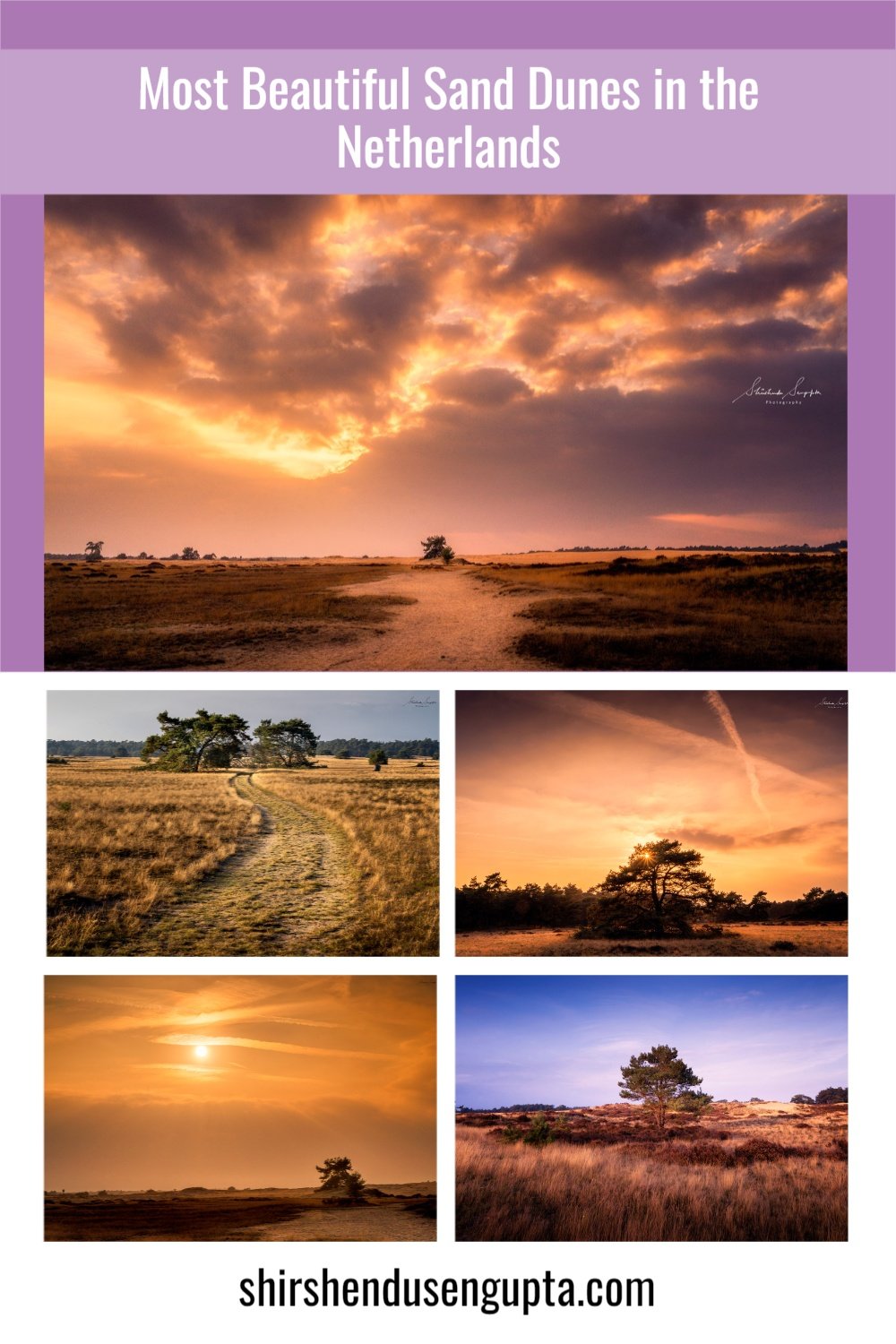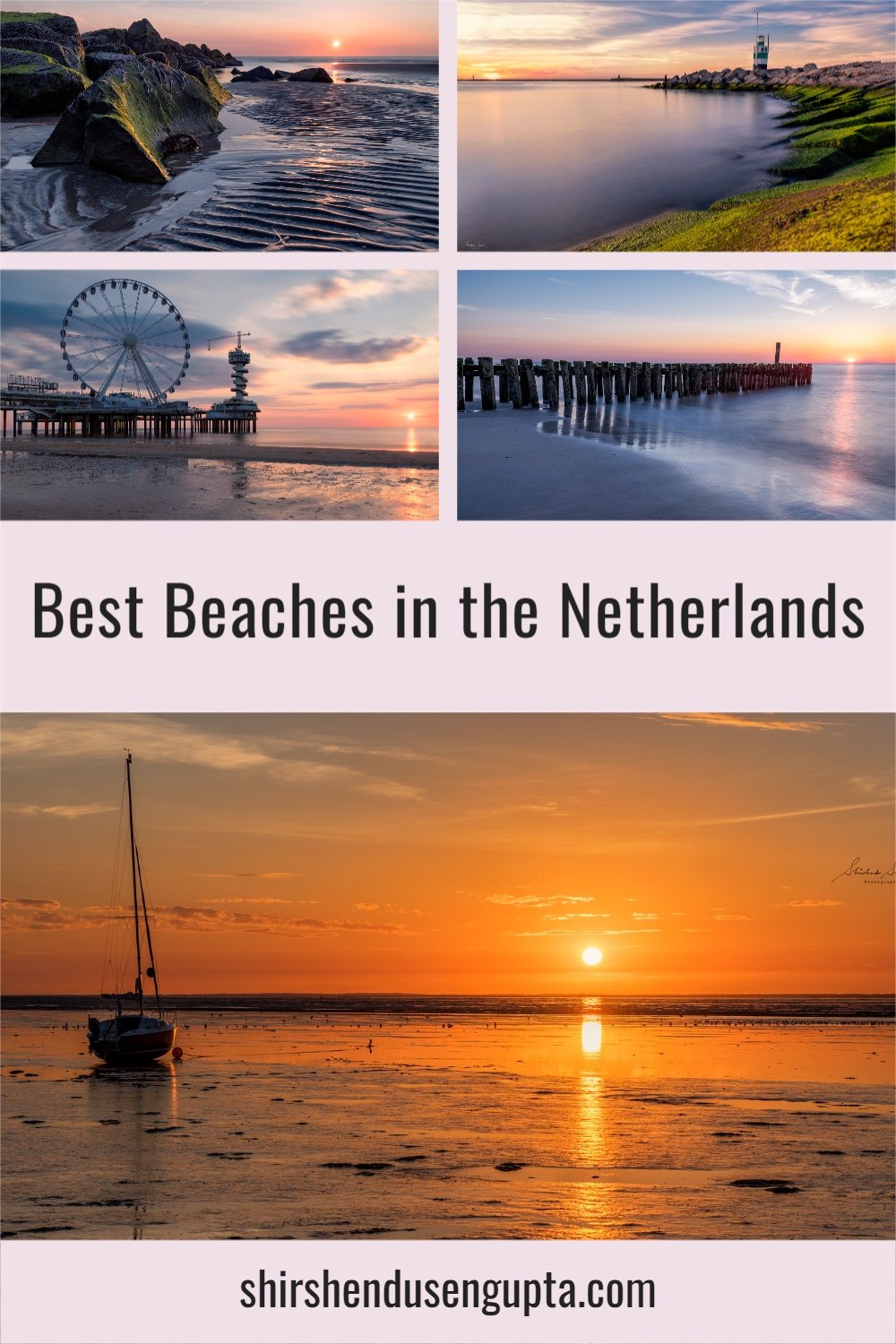Instagrammable Netherlands | 39 Best Photography Locations in the Netherlands | 39 Top Photo Spots in the Netherlands
Prologue
The Netherlands is a country where tradition and technology are entwined. Antique works of art, centuries-old windmills, endless ocean of vibrant flower fields, and romantic candle-lit cafes coexist with modernist architecture, sophisticated design, and sensational nightlife. With a quarter of the land below sea level, as well as 20% reclaimed from the sea, the seemingly flat landscape of the Netherlands, adorned with canals, windmills, polders, wooden houses, and drawbridges, never fails to amaze your imagination. Being Dutch citizens ourselves living in the Netherlands for many years, and having traveled to 100+ cities, towns, and villages across all 12 provinces, discovering many hidden treasures on the way that are not featured in any travel brochures or websites, I can safely proclaim that we’ve seen this country more than many of our Dutch friends who were born and raised here. Based on that experience, today, I decided to share with you the 39 best photography locations in the Netherlands that are shouting to feature on your Instagram.
39 Best Photography Locations in the Netherlands
1. Row Houses, Reitdiephaven (Groningen)
Let's start with one of the most beautiful and coziest mini marinas in the Netherlands. Reitdiephaven is a place full of hustle and bustle with shops, restaurants, and supermarkets surrounding the marina. Thanks to its pastel-colored row houses, Reitdiephaven converts into a painting during sunsets, especially on less windy days when the still water turns into a massive mirror. If you want to explore more such hidden gems in the Netherlands, please read our article Netherlands Off The Beaten Track | 43 Best Hidden Gems in the Netherlands.
2. Zaanse Schans, Zaandam (Noord-Holland)
The Zaanse Schans is a small Dutch village on the Zaan river 20 km north of Amsterdam, in the neighborhood of Zaandam. It has an open-air museum feel that offers a peek into the Dutch life of the golden ages with its traditional wood houses, vibrant windmills, and workshops. The Zaanse Schans draws in almost a million visitors each year, and it's one of the Netherlands' best-loved destinations.
To know more about Zaanse Schans, please read our article 9 Best Things to See and Do in Zaanse Schans Windmill Park (Zaandam) | All You Need to Know to Visit Zaanse Schans (Zaandam) on a Day Trip from Amsterdam, the Netherlands.
3. Molen de Adriaan, Haarlem (Noord-Holland)
The Adriaan windmill is a smock mill near the center of Haarlem erected in 1778 on an ancient protective tower's structures. Owing to its picturesque place on the Spaarne river and its excellent height, De Adriaan was an essential part of Haarlem's character for centuries until 1932, when the windmill dramatically burnt to ashes. Through the efforts of the locals, De Adriaan has now been restored. The sight of old Haarlem from the platform above the river is spectacular and not to be missed.
And if you want to know more about such places to visit iconic windmills in the Netherlands, please read our article 12 Best Places to See the Most Iconic Windmills in the Netherlands | 12 Most Famous Dutch Windmills | Visit The Most Beautiful Windmills of Holland.
4. Windmills, Kinderdijk (Zuid-Holland)
In the gorgeous wetlands around Dordrecht, 25 kilometers east of Rotterdam, stands nineteen historic windmills, constructed in 1740. The windmills of Kinderdijk were built to pump water out of the low-lying Alblasserwaard polder situated at the confluence of the Lek and Noord rivers, thereby preventing floods in the region. Today, they symbolize centuries-old Dutch engineering for water management. In 1997, they were included in the list of UNESCO World Heritage sites. The Windmills of Kinderdijk are one of the most photographed places in the Netherlands.
To know more about Kinderdijk, please read our article First Timer’s Guide to Visiting the UNESCO World Heritage Windmills of Kinderdijk | Tips on the Best Things to See and Do on a First Time Day Trip to Kinderdijk.
5. Radio Station, Kootwijk (Gelderland)
The colossal former broadcasting station Radio Kootwijk is situated in the Veluwe's heart, where the trees made way for an open area of heathland and sand shifts. A winding path through the forests leads via the small village of the same name to this imposing building, a historical example of technical developments in the 20th century. The transmission equipment for communication with the Dutch colonies overseas, especially the Dutch East Indies, was housed here since 1918. In 1923, the PTT started using the radiotelegraphic transmission station for the trans-oceanic longwave telegraphy. Soon after, the switch was made to short-wave transmission. If you want to explore more such hidden gems in the Netherlands, please read our article Netherlands Off The Beaten Track | 43 Best Hidden Gems in the Netherlands.
6. Rainbow Houses, Houten (Utrecht)
On the banks of the lake Rietplas, in Houten, stands the colorful wooden rainbow houses. It is indeed liberating to witness a stunning sunset sipping on a glass of beer on a small island in the middle of the lake that can be accessed by a makeshift boat. If you want to explore more such hidden gems in the Netherlands, please read our article Netherlands Off The Beaten Track | 43 Best Hidden Gems in the Netherlands.
7. Skyline, Deventer (Overijssel)
Deventer, established during the medieval era, became a city of prominence due to its position on the Ijssel river. Being a wealthy Hanseatic League member, the town abundantly displays its rich history, with spectacular monuments, grand museums, and beautiful squares with a delightful ambiance. To me, Deventer has one of the best skylines in the Netherlands to be photographed.
8. Harbor Houses, Enkhuizen (Noord Holland)
The picturesque harbor town of Enkhuizen, situated on the largest inland lake of western Europe, the IJsselmeer, was among the most thriving cities in the Netherlands in the 17th century. Together with the city of Hoorn, it gained importance as a member of the Dutch East India Company. In Enkhuizen, the historic sights are easily accessible via a stroll through the old city. In Enkhuizen, the Zuiderzee Museum is renowned for showcasing the history of Enkhuizen and the previous Zuiderzee (Southern Sea).
9. Koppelpoort (City Gate), Amersfoort (Utrecht)
The Koppelpoort, Amersfoort's postcard image, is a unique combination of a land gate and a water gate, the only one in the Netherlands. This dates from about 1425 and is part of the second city wall. Every day a minimum of twelve raddraaiers or 'wheel turners' were gathered by the guards who had to turn the pulley/wheel to open or close the gate. The wheel turning was a perilous task. If they did not walk simultaneously, one of them could fall, dragging the rest along with often fatal results. The gate had to be raised before it could come down to pull out the iron pins that held it in place. While the gate went down, walking in the wheel grew even faster, and many people stumbled and broke their limbs. The Koppelpoort was restored by Pierre Cuypers between 1885 and 1886 when it was given its current appearance. Between 1969 and 1993, a puppet theater existed at the gate. The latest restoration was completed in 1996, retaining the old building materials. For this, the town of Amersfoort received the Europa Nostra Award.
10. Binnenhof and Scheveningen, Den Haag (Zuid-Holland)
Den Haag or The Hague is the administrative capital of the Netherlands. It houses the Dutch Parliament Binnenhof, the King's official Palace of Noordeinde and the International Court of Justice. Being a stone throw from The North Sea, it has fantastic beaches. Out of them, Scheveningen is the most popular beach with a sight-seeing giant wheel, a pier that stretches until several meters into the sea and an elegant promenade for a leisurely walk along the coast. Having beautiful memories of my son growing up during our first six years in the Netherlands, I can safely proclaim that Den Haag is one of the most livable cities in the Netherlands.
To know more about the Dutch Beaches and coastal towns, please read our article 27 Best Beaches in the Netherlands | Top 27 Dutch Coastal Towns for a Summer Holiday in the Netherlands.
11. Wadden Sea and Shipwreck, Wierum (Friesland)
Wierum is a mound village on the northern coast of the Netherlands that originated on a salt marsh near the sea in the early Middle Ages. This dangerous location has not been without consequences. The northeastern part of the mound has disappeared into the sea, putting that part of the village at risk of the waves. The iconic church now seems to lean against the high seawall. If you climb the dike that was built to protect the village from the sea, you can witness spectacular sunsets with the sunlight shining off the muddy Wadden Sea.
Near the village of Wierum is an old shipwreck from the second world war times that emerges from the sea only during low tides. This wreck symbolizes a crucial part of the Wadden Sea's cultural history - the struggle for territory between man and nature that occurred here from the Middle Ages to the present. It first appeared close to the Schoorsterhoofd, in the west but eventually started to wander towards Wierum and ended up becoming trapped in the mud. Ever since it’s been here getting gradually affected by the ebb and flow gradually but steadily affecting the praam.
To know more about the shipwreck near Wierum and how to visit it, please read our article The Story of the Shipwreck on the Wadden Sea in Wierum, Friesland, the Netherlands.
12. Noorderpier (North Pier) Rocks, Hook of Holland (Zuid-Holland)
Hoek van Holland (Hook of Holland) is a lovely coastal town in Zuid-Holland known for its beautiful beach bustling with beach clubs, bars, restaurants and fantastic nightlife. You can get an astounding view of the setting sun from the 4.5 km long Noorderpier (North Pier). However, you need to be careful as during high tides and windy days, the waves hitting the pier can get very dangerous. To know more about the Dutch Beaches and coastal towns, please read our article 27 Best Beaches in the Netherlands | Top 27 Dutch Coastal Towns for a Summer Holiday in the Netherlands.
13. Zuidpier (South Pier) Lighthouse, Ijmuiden (Noord-Holland)
IJmuiden is a small harbor town in the province of Noord-Holland. During the low tide, the mossy rocks emerge from the water, which, combined with sunrise or sunset, can form a spectacular image. Hence check tide timings to know which day the low tide coincides with sunrise or sunset to capture stunning golden hour shots. If you want to explore more such hidden gems in the Netherlands, please read our article Netherlands Off The Beaten Track | 43 Best Hidden Gems in the Netherlands.
14. The Breakwaters and Lighthouse, Westkapelle (Zeeland)
Westkapelle, a seaside resort town secured from the North Sea by a high embankment, lies in the Dutch province of Zeeland, which together with Dishoek and Zoutelande, comprises the Zeeland Riviera. It is a perfect place for beach enthusiasts, as this region boasts some of the loveliest sand beaches in the Netherlands, characterized by typical wooden breakwaters.
Westkapelle, surrounded by the beautiful hinterlands and the highest dunes of the Netherlands, provides ample opportunities for sunbathing, water sporting, biking, and strolling. At the end of the town, there's a vibrant lighthouse. It used to be a Gothic church tower in the past that was damaged by a fire. This fantastic lighthouse has influenced artists such as Piet Mondrian, who, in 1910, used it as a motif in a giant oil painting. Today, it is which is one of the highlights of the Gemeentemuseum in The Hague. To know more about the Dutch Beaches and coastal towns, please read our article 27 Best Beaches in the Netherlands | Top 27 Dutch Coastal Towns for a Summer Holiday in the Netherlands.
15. The Windmills, Dokkum (Friesland)
With well preserved fortified town walls, stepped gables, canals, and drawbridges, the historic city of Dokkum instantly takes you back a few centuries. In spring, the walking routes, bridges, and strongholds are lined with blooming flowers creating one of a kind ambiance. The most Instagram-worthy spot of all is the two working Dokkum windmills standing on the western side. If you want to know about other hidden treasures in Friesland, please read our article Discover Friesland | 9 Best Places to Visit in Friesland, the Netherlands.
16. Horse of Marken, Marken (Noord-Holland)
Marken is a small fisherman’s village in North Holland, situated on the lake Markermeer. It never fails to charm the visitors with its canals, traditional colorful wooden houses, and drawbridges. At the end of the village, there’s a quaint lighthouse known as ‘Paard van Marken’ meaning ‘Horse of Marken’, accessible only on foot, about a half-hour walk over the dike. If you are in the vicinity of Noord-Holland, I recommend a tranquil walking experience over the dike to the lighthouse leaving the hustles and bustles of the city far behind. To know more about Marken, please read our article Experience Waterland | 11 Most Charming and Beautiful Authentic Dutch Villages of Waterland | The Wet Back Garden of Amsterdam, the Netherlands. And if you want to explore more such hidden gems in the Netherlands, please read our article Netherlands Off The Beaten Track | 43 Best Hidden Gems in the Netherlands.
17. The Purple Hills, Posbank-Veluwezoom (Gelderland)
Veluwezoom, the first National Park in the Netherlands, is a hilly terrain comprising heathlands and sand dunes. During early autumn (late August), the blooming heathers turn the place into a purple wonderland which's best viewed from the 90 m high hill of Posbank. To know more about Veluwezoom National Park and how to visit it, please read our article The Purple Hills of Posbank | The Heather Fields of Veluwezoom National Park, Hoge Veluwe, Gelderland | The Best Place to See Heather Bloom in the Netherlands, and if you want to explore more such hidden gems in the Netherlands, please read our article Netherlands Off The Beaten Track | 43 Best Hidden Gems in the Netherlands.
18. Kersenbloesempark (Cherry Blossom Park), Amstelveen (Noord-Holland)
The best place to see Cherry Blossoms and celebrate Sakura Matsuri (Cherry Blossom Festival) in the Netherlands is the Kersenbloesempark or The Cherry Blossom Park in Amstelveen, approximately 20 km south of Amsterdam. It is a part of the Amsterdamse Bos (Amsterdam Forest) that is canopied by a wide pink-white umbrella between mid-March and mid-April. To know more about the Cherry Blossom Park and how to visit it, please read our article Sakura Matsuri (Cherry Blossom Festival) 2026 | Celebrating the Advent of Spring at Kersenbloesempark (Cherry Blossom Park) in Amstelveen, the Netherlands.
19. Flower Fields of Bollenstreek and Keukenhof (Noord-Holland)
The best time to visit the flower fields in the Netherlands is during the spring months of mid-March to mid-May. During these spring months, being the largest exporter of flowers globally, the whole country transforms into a vast ocean of flowers. It starts with cherry blossoms, crocuses, daffodils, and hyacinths between mid-March and mid-April, followed by the famous tulips between mid-April and mid-May. And for photography, I advise visiting the fields during sunrise or sunset.
Apart from the flower fields, you must visit the world-famous Keukenhof in Lisse. Also dubbed ‘The Garden of Europe,’ it is the largest flower park in the world. Built over 79 acres (32 hectares) of land, Keukenhof boasts a vibrant display of 7 million flower bulbs comprising tulips, daffodils, hyacinths, lilies, roses, carnations, and irises. If you want to know where to find the best flower fields in the Netherlands, please read our article De Mooiste Bloemenroutes van Nederland | 4 Best Road Trip Flower Routes around Tulip, Daffodil, and Hyacinth Bulb Fields in the Netherlands.
20. Bloemencorso Bollenstreek
Every year in the middle of April, the biggest spring festival of the Netherlands named ‘Bloemencorso (Flower Parade) Bollenstreek (Bulb Region),’ makes a 42 km journey from Noordwijk to Haarlem, passing by Keukenhof Gardens. For ages, this area's soil and climate have been ideal for growing bulbs from where it derives its name - the bulb region. Several flower parades take place in the bulb region throughout the year but Bloemencorso Bollenstreek is the only flower parade that takes place in the spring and the only one that is made entirely of spring bulb flowers, like tulips, daffodils, and hyacinths. It is also the most well-known across the country and among the biggest editions worldwide. Every year, almost a million spectators watch the parade from the sidelines or from official flower parade grandstands.
To know how to visit the biggest annual spring Flower Parade in the Netherlands, please read our articleBloemencorso Bollenstreek Holland 2026 | Flower Parade of the Bulb Region Netherlands 2026 | Information, Route, Tips, and Tricks.
21. The Dolmens (Drenthe and Groningen)
Let me ask you a “Did you know?” question. Did you know that there are Stonehenges in the Netherlands? And that they are older than the English Stonehenge and the Egyptian Pyramids? And that too not just 1, but 54? If not, then you must know!
Dolmens are megalithic tombs found all over Northwestern Europe dating back between 5000 and 3000 BC in the Neolithic period (New Stone Age). Literally meaning “stone tables” (derived from the Breton words "dual" and "maen," signifying table and stone, respectively), dolmens are composed of one or more capstones covering at least three, but frequently (many) more standing supporting stones. Based on current theory, Dolmens are thought to be the remnants of ancient burial chambers. For centuries, the Dutch believed that huynen (giants) had made the hunebedden (meaning giant beds in Dutch), from where the word was derived. In reality, the dolmens of the Netherlands were built by farmers belonging to the Funnel-beaker Culture between 3350 and 3030 BC, making them older than the English Stonehenge and Egyptian pyramids. The dolmens are scattered across the provinces of Drenthe and Groningen. Drenthe has 52 dolmens and Groningen has 2 making it a total of 54 dolmens in the Netherlands.
To know more about the Dolmens and how to visit them, please read our article A Complete Guide to Visiting All 54 Prehistoric Dolmens (Hunebedden) of Drenthe and Groningen in the Netherlands | Dolmen (Hunebed) Route with Map, Information, Tips, and Tricks. And if you want to explore more such hidden gems in the Netherlands, please read our article Netherlands Off The Beaten Track | 43 Best Hidden Gems in the Netherlands.
22. Markt, Delft (Zuid-Holland)
Delft, the birthplace of the Dutch Baroque Period painter Johannes Vermeer of the 'Girl with the Pearl Rings' fame, is known worldwide for its blue earthen pottery named Delftware. A stroll along canals, churches, mansions, and courtyards in the old town center Markt takes you back in time to the glorious days. The town square springs back to life with Delft university students enjoying the outdoor terraces on the weekend.
23. De Terp van Leidschenveen, Den Haag (Zuid-Holland)
High on a green mound (‘terp’ in Dutch), sandwiched between the hustles and bustles of a highway, a railway, and a new neighborhood, stands a small, austere white chapel as a beacon in the landscape. The clock in the tower echoes the time in its own way, creating a serene ambiance amidst busy city life. The mound that the church stands on was formerly a garbage mound that now partly serves as a noise barrier. In this way, art, architecture, science, and landscape were merged together by Dutch engineering.
The building attracts your attention and, at the same time, illudes you. The dimensions of the chapel have been chosen in such a way that it initially resembles a regular simple church. Since there are no references, no bench, lamppost, or tree, only a high mound covered with clipped grass, you can't realize the true size of the structure. This is further enhanced by the wide pyramidal shape of the mound, which increases the perspective effect. It is only when one approaches the structure closer that it becomes clear that the image you expect has shrunk. However, the artwork is more than just an optical trick. The white building is abstracted of religious elements or symbols and therefore is technically not a ‘church’ but a secular icon!
To know more about De Terp van Leidschenveen and how to visit it, please read our article The Little White Church on the Hill | De Terp van Leidschenveen, Den Haag | The Mound of Leidschenveen, a Unique Outdoor Art in The Hague, the Netherlands.
24. Ouddorpse Haven, Ouddorp (Zuid-Holland)
The Port of Ouddorp is a port south of the village center of Ouddorp located on the Grevelingenmeer, the largest saltwater lake in Western Europe that is a part of the Rhine-Meuse estuary sandwiched between the Dutch provinces of South Holland and Zeeland.
In the mid-19th century, fishing became more important to the village. Until then, Ouddorp had mainly been an agricultural village. On August 8, 1860, the mayor of Ouddorp Bernardus Pieter van Kerkwijk decided to build the new harbor. After the construction of the harbor, a quay made of brushwood was constructed. Buildings soon developed along the quay, a row of houses with warehouses and two cafes, all of which were demolished in 1944 by order of the Nazis. The harbor was rebuilt in the 1950s. Watching the sun go down at this idyllic harbor with the quaint wooden boathouse is an experience not to be missed!
25. Sint Servaasbrug, Maastricht (Limburg)
The Sint Servaasbrug is a 13th-century stone arch bridge over the river Maas in the Dutch city of Maastricht. The bridge was named after the 4th-century bishop of Maastricht, Sint-Servaas, in 1932. Before that is was officially known as Maasbrug and colloquially as the old bridge. The Sint Servaas Bridge is considered the oldest bridge in the Netherlands and an icon of the city of Maastricht. The building is a national monument.
26. Calatrava Bridges, Haarlemmermeer (Noord-Holland)
The Calatrava Bridges are three white cable-stayed bridges designed by the Spanish architect Santiago Calatrava in the Dutch municipality of Haarlemmermeer, where I live. The bridges are named after the instruments Harp, Zither, and Lute because of the string-like structure.
27. Museumplein and Canal Rings, Amsterdam (Noord-Holland)
Museumplein derives its name from the museums located around the square viz. Rijksmuseum, Van Gogh Museum, Stedelijk Museum, Diamond Museum, and Moco (Modern, Contemporary, and Street Art) Museum. It is a popular square among the locals for hanging out. It is gorgeous during Christmas when the trees are lit up with Christmas lights and the lake in front is converted into an ice skating rink.
Speaking of Amsterdam’s canal rings, built during the Golden Age, they have stood apart as one of the most remarkable and gorgeous urban planning projects to be executed in 17th-century Europe. In 2010 they were declared as a UNESCO World Heritage Site. Designed in a circular manner instead of right angles, the canals were originally built to accommodate the city's population explosion owing to its flourishing maritime trade.
28. Light Festival, Amsterdam (Noord-Holland)
The annual Amsterdam Light Festival (ALF) fills the Dutch capital's canals with magnificent works of light art every winter. Designers, architects, and artists from all around the world submit hundreds of concepts each year, out of which 30 artworks are chosen for display in the festival by a selection committee.
To know more about the Amsterdam Light Festival and how to visit it, please read our article Amsterdam Light Festival 2025-2026 | 14th Edition | Dates, Opening Hours, and Free Walking Route Map.
29. GLOW Light Art Festival, Eindhoven (Noord-Brabant)
Every year in November, the otherwise industrial city of Eindhoven transforms into a magical fairy tale of light, known as GLOW Eindhoven. This annual light art festival attracts thousands of visitors from all over the world who come together to enjoy the breathtaking open-air exhibition of innovative light artworks created by international artists using new media technologies, such as computers, sensors, animations, and projections. The fusion of art, technology, and architecture creates a bewitching experience for visitors of all ages. At GLOW Eindhoven, around 35 light installations are connected by a walking route of approximately 5 km which runs through the city center up to the banks of the river Dommel.
To know more about the GLOW Eindhoven and how to visit it, please read our article GLOW Eindhoven Light Art Festival 2025 | All You Need to Know Before You Go | Tips for Your Visit.
30. Christmas Town, Valkenburg (Limburg)
During the Christmas season, Valkenburg’s amazing caves are transformed into stunning Christmas Markets. More than 50 stores inside the Velvet and Municipal Caves sell Christmas decorations and presents. The caves' darkest corners are illuminated by bright lights and Christmas trees with lovely ornaments. Along with that, in most places, there is only one Christmas market, but in Valkenburg, the entire city is engulfed in a Christmassy ambiance with a dazzling Christmas parade, gorgeous music, and dance festival in traditional costumes, earning it the name of 'The Christmas Town.'
To know more about the Christmas Cave Markets of Valkenburg and how to visit them, please read our article Valkenburg Christmas Market 2025-2026 | Kerststad Valkenburg 2025-2026 | Christmas Town Valkenburg 2025-2026 | The Unique Christmas Cave Markets of Valkenburg, the Netherlands.
31. Waal Crossing Memorial and Oversteek Bridge, Nijmegen (Gelderland)
On 20 September 1944, American paratroopers crossed the Waal river in Nijmegen in 26 small boats rowing with rifle butts in the absence of proper oars to recapture the two bridges over the Waal river in Nijmegen. Named in history as Operation Market Garden, it was a 4-hour battle that resulted in recapturing of the two bridges by the paratroopers, thereby leading to the liberation of Nijmegen with half of the 260 US soldiers injured or martyred. Forty years later, the 'Waal Memorial' was erected to honor the soldiers who fell throughout the Waal crossing.
In 2013 the Oversteek (meaning The Crossing) bridge over the Waal was inaugurated by the last enduring veterans of the attack, and Mrs. Barbara Gavin, the oldest child of General James Gavin, the 'liberator' of Nijmegen to immortalize Nijmegen's brave crossing in 1944. To know more about Waal Crossing Memorial and how to visit it, please read our article Remembering the Fallen | 3 Historic World War II Memorials and Cemeteries in the Netherlands.
32. Stadhuis (Town Hall), Gouda (Zuid-Holland)
In the heart of the old town of Gouda, dominating the Markt – one of the largest market squares in Holland and scene of a weekly tourist-orientated cheese market stands the impressive mid-15th-century Gothic Stadhuis (town hall). Constructed from sandstone, it is a testament to Gouda's wealth from the cloth trade during medieval times.
To know more about the cheese market of Gouda and how to visit it, please read our article The Dutch Cheese Markets 2026 | The Cheese Market Cities of the Netherlands - Alkmaar, Edam, Gouda, Hoorn, and Woerden.
33. Erasmus Bridge and Willems Bridge, Rotterdam (Zuid-Holland)
The white Erasmusbrug or Erasmus Bridge (also known as the Swan Bridge owing to its shape) and the red Willemsbrug or Willems bridge are two spectacular crossings across the river Maas in Rotterdam. They are among my top spots for golden hour photography.
34. Waterpoort, Sneek (Friesland)
Little is known about Sneek's middle ages watergate. It’s thought to be built around 1492 by an unidentified designer, and its primary function was to manage the water streaming into the town. At that time, towns and cities were constructed around thick stone walls for defense from opponent intrusion. The Dutch utilized the water as moats as an additional defense line, taking benefit of its low-lying terrain. If you want to know about other hidden treasures in Friesland, please read our article Discover Friesland | 9 Best Places to Visit in Friesland, the Netherlands.
35. Kasteel de Haar (Utrecht)
De Haar Castle is the largest and most luxurious castle in the Netherlands and a visit should be on everyone's wish list for that reason alone. Marvel at the imposing fairytale building, towers, moats, gates, and drawbridges, then stroll through the beautiful castle gardens that are exceptionally breathtaking during spring.
To know more about Kasteel de Haar and how to visit it, please read our article Explore the Fairytale Kasteel de Haar (De Haar Castle) in Haarzuilens, Utrecht | Day Trip from Amsterdam to the Largest Castle in the Netherlands.
36. Paleis Het Loo, Apeldoorn (Gelderland)
At first glimpse, the Dutch royal family’s Versailles-like handsome baroque summer palace of ‘Het Loo’ (meaning “clearing in the woods”) seems just as it was when it was built during the 17th century in the middle of the woodlands of Apeldoorn, in the province of Gelderland in the Netherlands. But 10 meters underneath the courtyard, an injection of engineering expertise spanning 5,000 square meters and costing €171m has created an extraordinary underground Spanish Macael marble museum that showcases the history of the House of Orange. A part of European history has passed through its rooms, from Louis Napoléon, appointed as king in the 19th century by his brother Napoleon Bonaparte, then Emperor of France, to the German troops stationed there during World War II. Today, Paleis Het Loo is the largest, authentic 17th-century palace of the House of Orange-Nassau.
To know more about Paleis Het Loo and how to visit it, please read our article 12 Things to See and Do in Museum Paleis Het Loo | All You Need to Know Before Visiting Het Loo Palace, Apeldoorn, the Netherlands.
37. Charles Dickens Festival, Deventer (Overijssel)
Every year the week before Christmas, the historic center of the Hanseatic League city of Deventer in the Netherlands transforms into a magical Victorian-era English world of Charles Dickens where more than 950 characters from the pages of his famous books spring to life amidst a backdrop of exquisitely restored 19th-century buildings decorated with house-sized Christmas trees and thousands of lights!
To know more about the Charles Dickens Festival Deventer and how to visit it, please read our article Dickens Festijn Deventer 2025 | World’s Largest Charles Dickens Festival in Deventer, Netherlands 2025 | Walking Route Map, Practical Information, Tips and Tricks.
38. The Dutch Ice Sculpture Festival, Biddinghuizen (Flevoland)
The Dutch Ice Sculpture Festival is a magical frosty wonderland where ice crystals melt your heart; where the world’s top 45 ice artists (also known as ‘carvers’) from 16 different countries come together to transform 550 tons of ice and snow into 100 breathtaking artworks!
To know more about the Dutch Ice Sculpture Festival and how to visit it, please read our article The Dutch Ice Sculpture Festival 2025-2026 | Netherlands Ijsbeelden Festival Biddinghuizen 2025-2026.
39. Art Below Zero Ice Sculpture Festival, Amsterdam (Noord-Holland)
Art Below Zero Amsterdam is a unique ice sculpture exhibition where top ice artists from across the globe come together to transform 500 tons of ice and snow into 135 breathtaking artworks that honor Amsterdam's colorful past and rich cultural legacy. Featuring breathtaking ice sculptures, an audio tour, a 4D experience, and entertainment for all ages, it is the largest ice exhibition in Europe that commemorates the city's 750th anniversary!
To know more about the Art Below Zero Amsterdam Ice Sculpture Festival and how to visit it, please read our article Art Below Zero Amsterdam Ice Sculpture Festival 2024-2025 | Art Below Zero Ijsbeelden Festival Amsterdam, Netherlands 2024-2025 | Europe’s Largest Ice Art Exhibition.
Visiting the Netherlands
Best Time to Visit: The best seasons to travel to the Netherlands are spring (April to May) when tulips are in full bloom and early fall (September to October) when beautiful fall colors are everywhere. The weather is mild and pleasant during these times, and the crowds are generally smaller compared to the peak summer season (June to August).
Number of Days to Stay: Seven to ten days are perfect for touring the Netherlands. This allows you to visit major cities like Amsterdam, Rotterdam, and The Hague, as well as explore smaller towns and attractions such as Utrecht, Haarlem, Maastricht, and the tulip fields. It also gives you time to experience the Dutch countryside and iconic windmills.
Best Place to Stay: Amsterdam, the capital of the Netherlands, is a great place to start your Dutch exploration. It has a large selection of accommodation options, ranging from high-end hotels to inexpensive hostels. Major attractions in the city include the Rijksmuseum, the Anne Frank House, and the Van Gogh Museum. For those seeking a more contemporary urban experience, Rotterdam is a fantastic choice because of its modern architecture and vibrant cultural scene. Additionally, it is a significant transportation hub that facilitates travel around the country. Den Haag (The Hague) which is the seat of the Dutch government and the International Court of Justice, is home to many historical landmarks, museums, and beaches. For those who like to avoid the bustle of the bigger cities, Utrecht is a wonderful option because of its convenient central location and quaint medieval old town. It has excellent train connections to various regions of the nation.
Best Way to Arrive: Amsterdam Airport Schiphol, one of Europe's busiest airports, serves as the primary international entry point into the Netherlands. It is connected to numerous international destinations. The Netherlands has excellent train connections to its surrounding nations. Amsterdam is connected to cities like Brussels, Paris, London, and Berlin via international trains like Thalys, Eurostar, and ICE. Numerous international bus companies, including FlixBus, run services from different European cities to the Netherlands. You can also drive to the Netherlands by car, especially if you want to explore the surrounding regions. There is a vast road network throughout the nation, and airports and major cities offer car rental services.
Best Local Mode of Conveyance: The Netherlands has a first-grade public transportation system consisting of buses, trains, trams, metros, and ferries. A contactless smart card called the OV-chipkaart is used to board all public transportation. Nederlandse Spoorwegen (NS) runs the trains, which are the most convenient means of transportation between cities. In addition to ridesharing services like Uber, taxis are accessible in all major cities. The Netherlands is well-known for its cycling culture, featuring bike-friendly infrastructure and designated bike lanes all around the nation. Cities in the Netherlands are very walkable, especially the central areas of Amsterdam, Utrecht, and The Hague. In cities like Amsterdam, canal boats are a popular way to see the city from a different perspective. Various companies offer canal cruises and water taxis.
Epilogue
So those were the 39 best photography locations in the Netherlands. Please let us know in the comments below if you enjoyed reading this article.
And if you want to explore the best hidden gems in the Netherlands, please read our article Netherlands Off The Beaten Track | 43 Best Hidden Gems in the Netherlands. Until then, merry traveling and happy shooting!
Pin the article
Bookmark the article for reading later!
Want to license/buy photos in the article?
License photos for commercial/editorial use or buy photo prints!
Want us to write an article for you?
Articles for magazines, newspapers, and websites!
Watch our Videos
Check out our videos on our Youtube Channel!
Join the Newsletter
Get updates on our latest articles!
We respect your privacy. Read our policy here.



